“My life through the prism of technology ...” - Stephen Wolfram
- Transfer
Today is the birthday of Stephen Wolfram, the creator of Mathematica and Wolfram | Alpha, as well as the Wolfram Language. We hope that the translation of his speech at the Museum of Computer History (Mountain View, CA) will be interesting and useful for you. You will learn many unexpected, amazing facts from Stephen's long professional and personal biography.
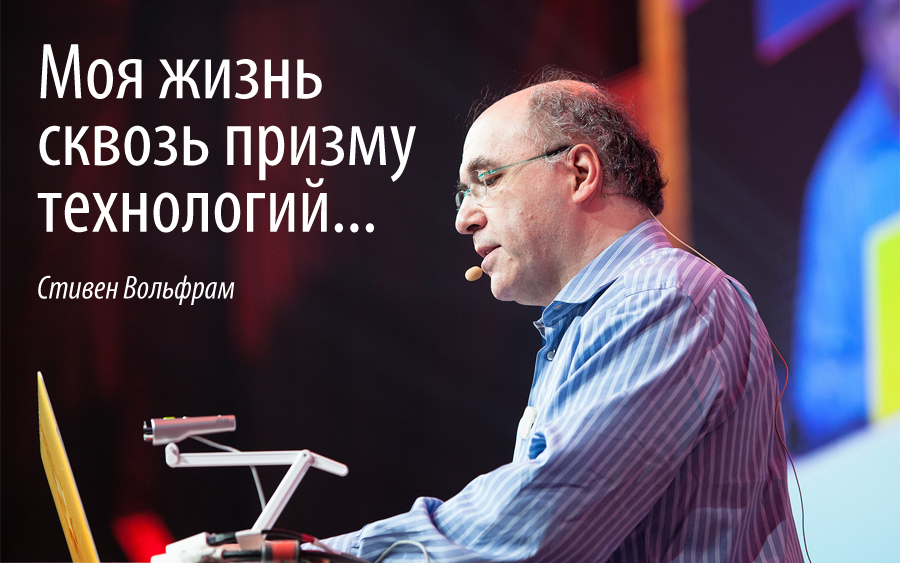
Translation of Stephen Wolfram's post " My Life in Technology — As Told at the Computer History Museum ".
Many thanks to Polina Sologub for help in translating and preparing the publication.
Usually I’m interested in the future. However, the story, in my opinion, is interesting and informative, and I study a lot of it, too. Most often these are life stories of other people. But the Museum of Computer History asked me to tell today about my own life and about the technologies that I created. That is exactly what I am going to do.
Now a unique time has come for me - a lot of things that I have been working on for more than 30 years have begun to bear fruit.
My focus is on Wolfram Language- A new kind of language based on knowledge (in which a huge amount of knowledge is built-in - both about computing and about the world as a whole). Wolfram Language is maximally automated so that the path from the idea to the actual implementation is as short as possible.
Today I want to talk about how I went about creating the Mathematica and Wolfram | Alpha systems .
I will have to talk a lot about my own story: mainly about how I spent most of my life doing science and technology. When I look back, a lot of what happened seems inevitable and inexorable. And something I did not expect.
But let me start from the beginning. I was born in London in 1959 - so yes: I'm godlessly old (at least by my current standards). My father ran a small company (international textile trade) for almost 60 years, and also wrote several science fiction novels . My mother was a professor of philosophy at Oxford . The last time I was at Stanford's bookstore, I accidentally saw her textbook on philosophical logic.
You know, I remember when I was 5 or 6 years old, I missed some party with a bunch of adults, and here a very long conversation about some very respected philosopher from Oxford ended with the words: “the day will come, and this child will become philosopher"Well, they turned out to be right. It's pretty funny what happens.
That's how I was then:

I went to elementary school in Oxford - to a place called Dragon School (I guess this is probably the most famous elementary school in England ). Wikipedia believes that the most famous people from my class at the moment are me and actor Hugh Laurie .
Here is one of my school reports (I was 7 years old). This is a class rating. So I excelled in poetry and geography, but not in mathematics (and yes - this is England, so we had the subject of “Bible study”). But at least least it says: " he is full of spirit and determination; he must go far ... "
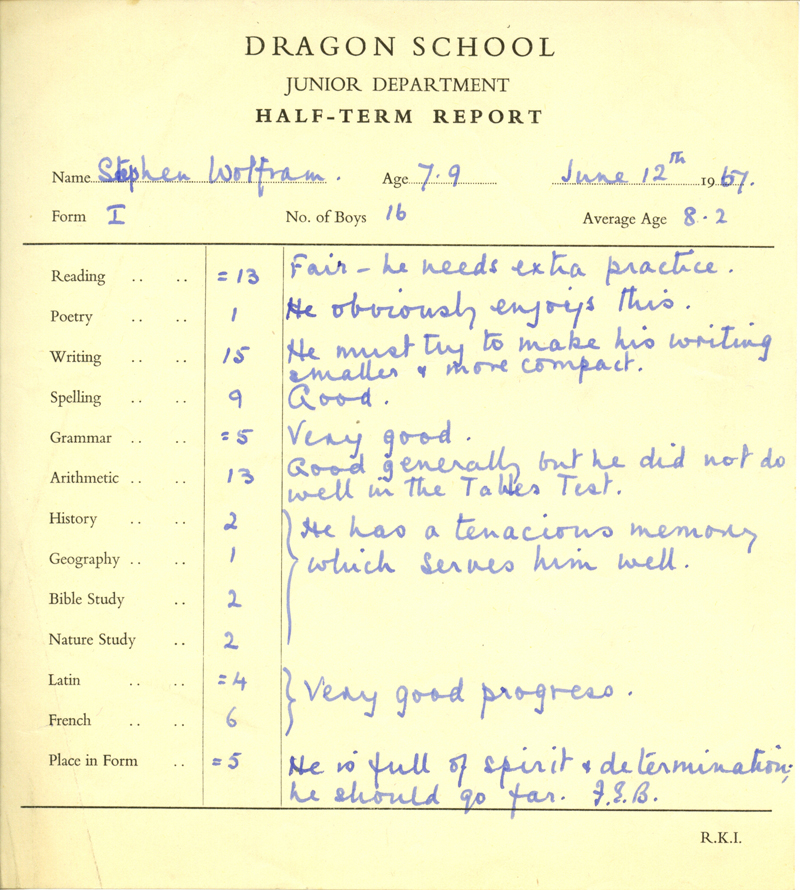
It was 1967, and I studied Latin and so on; but what I really liked was the future. At that time, the most future-oriented was the space program. And I became very interested and began to collect all the information I could find about each launched spacecraft, and put the small notebooks in which I saved all the information together. And I found that even from England it was possible to write to NASA and get all the material for free by mail.
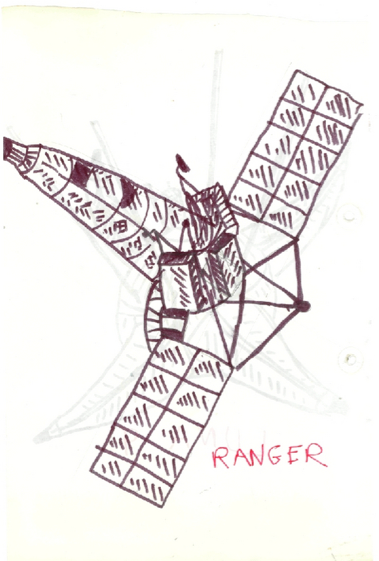
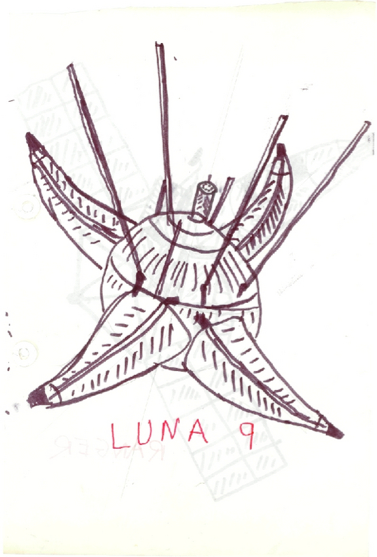

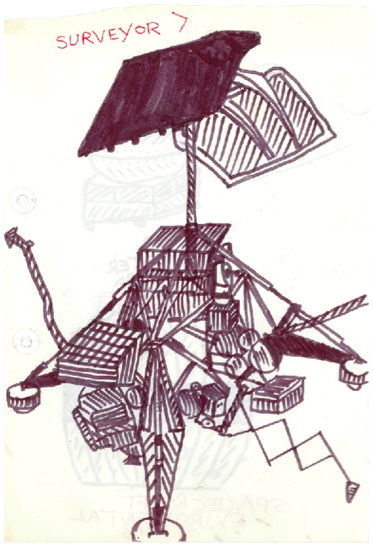
At that time, it was assumed that there would be colonies on Mars, and I began to make small projects for spacecraft.
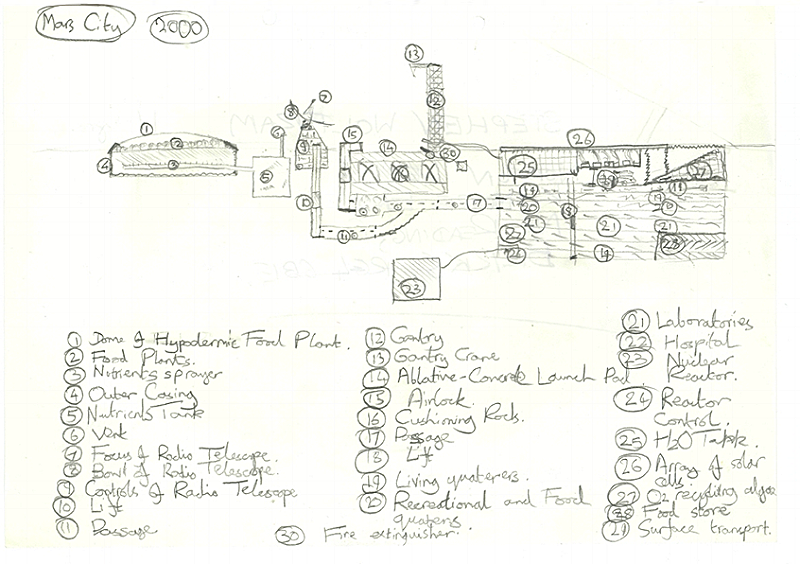
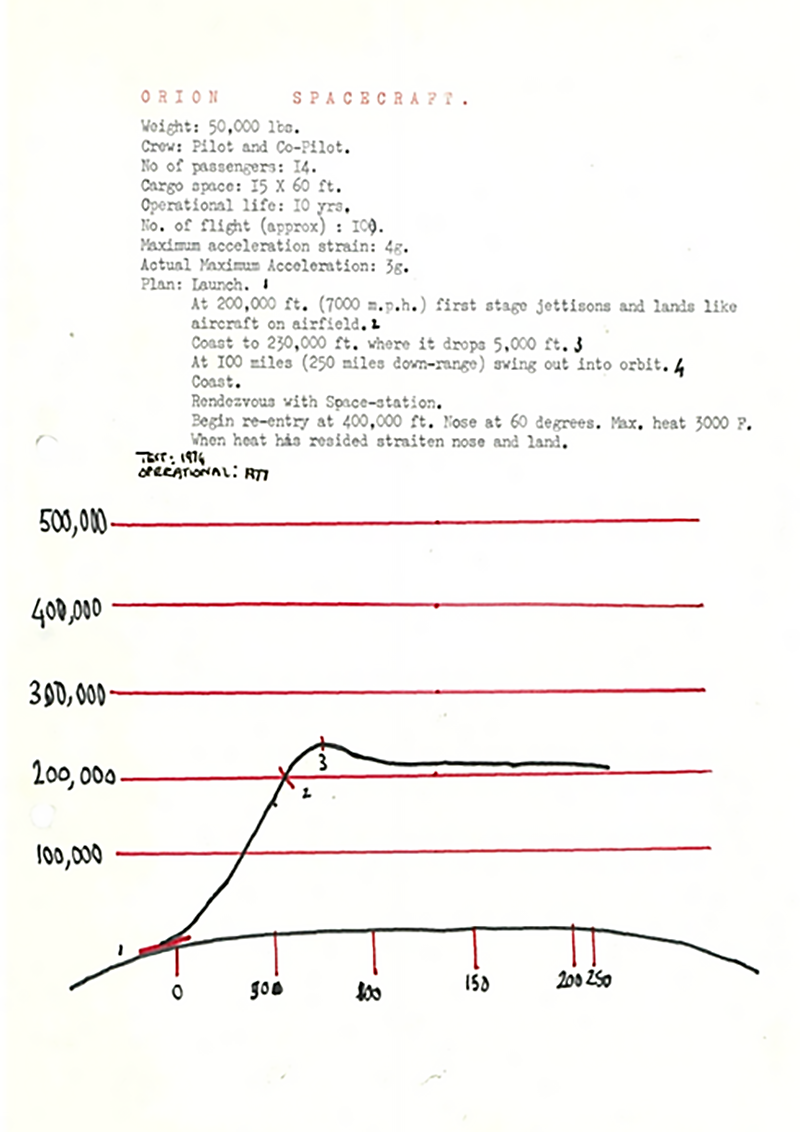
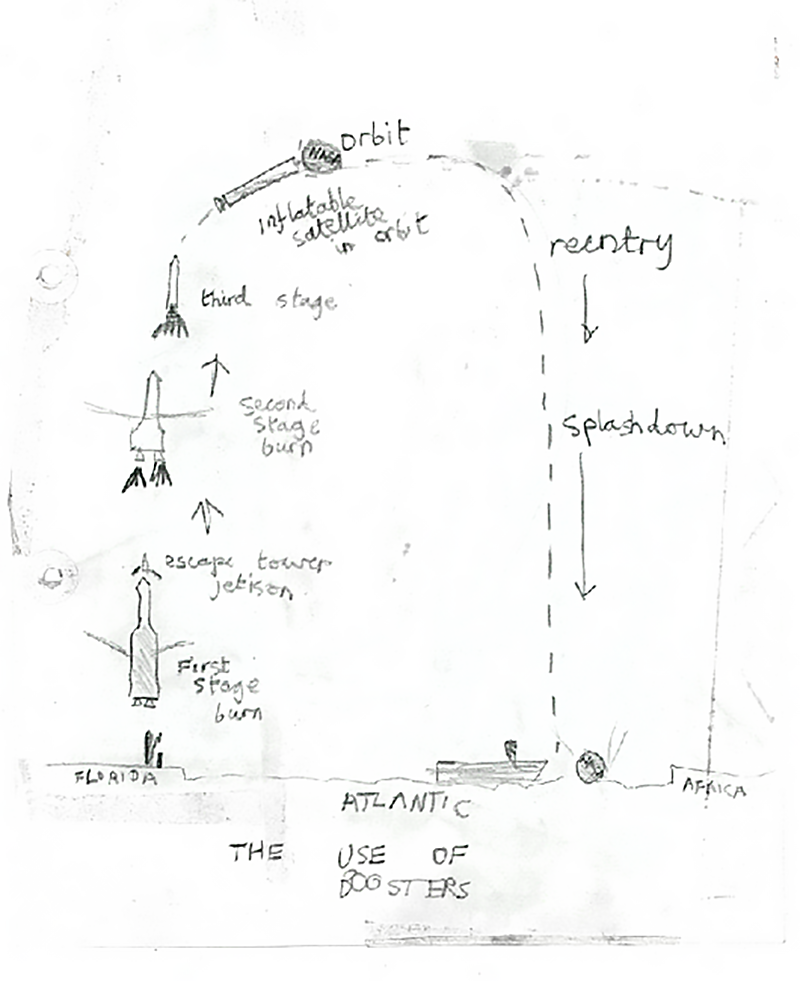

I became interested in engines and ion batteries, and when I was 11 years old, my main interest was physics.
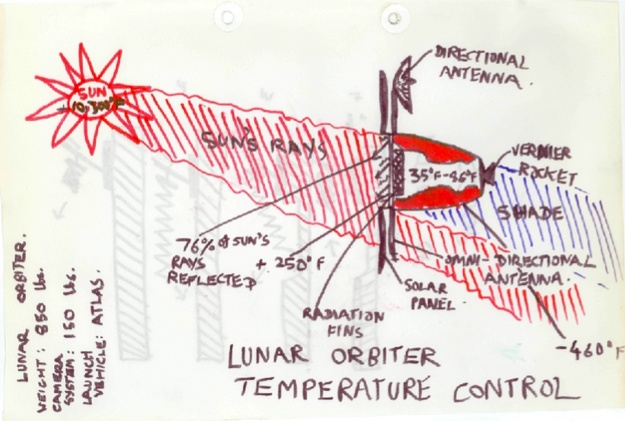
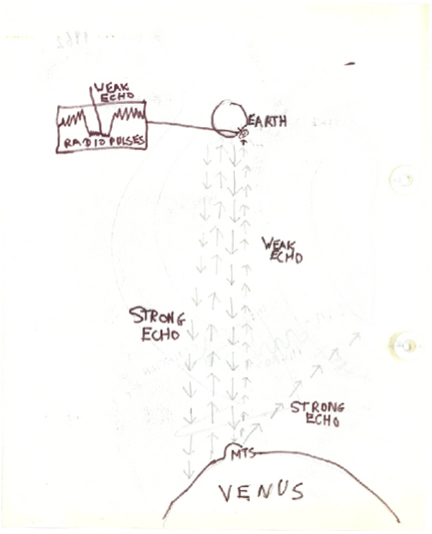
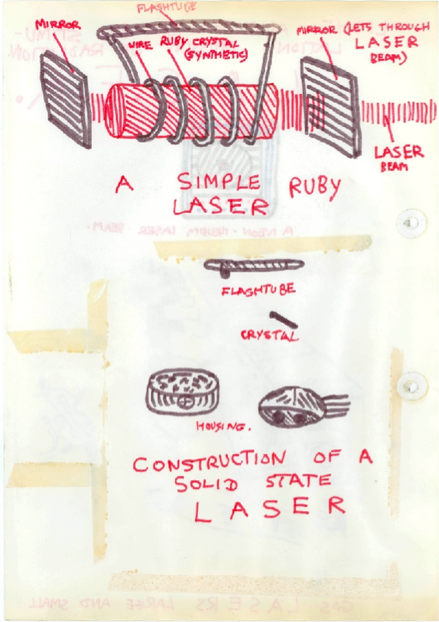
And I found that you can learn a lot and quickly if you just read books (this had nothing to do with school). I chose various fields of physical science and tried to organize knowledge about them into a system. In the end (when I was already 12) I spent the summer bringing together all the facts about physics. I suppose you could call some of this “visualization.” And, indeed, now, like so much more, it’s easy to find on the Internet :

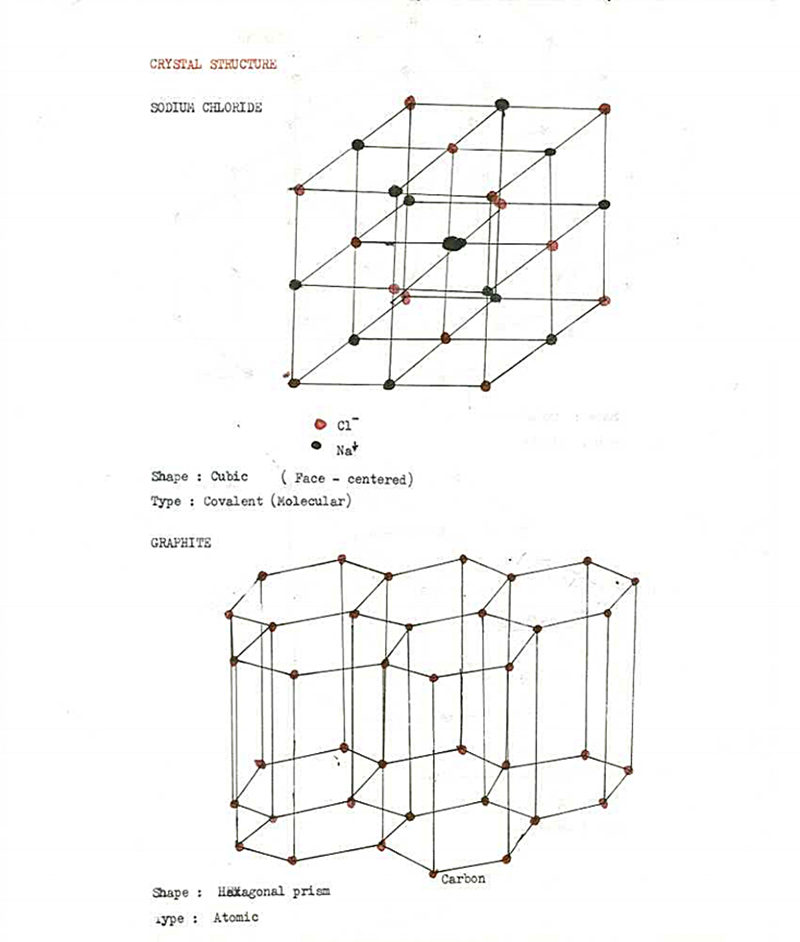
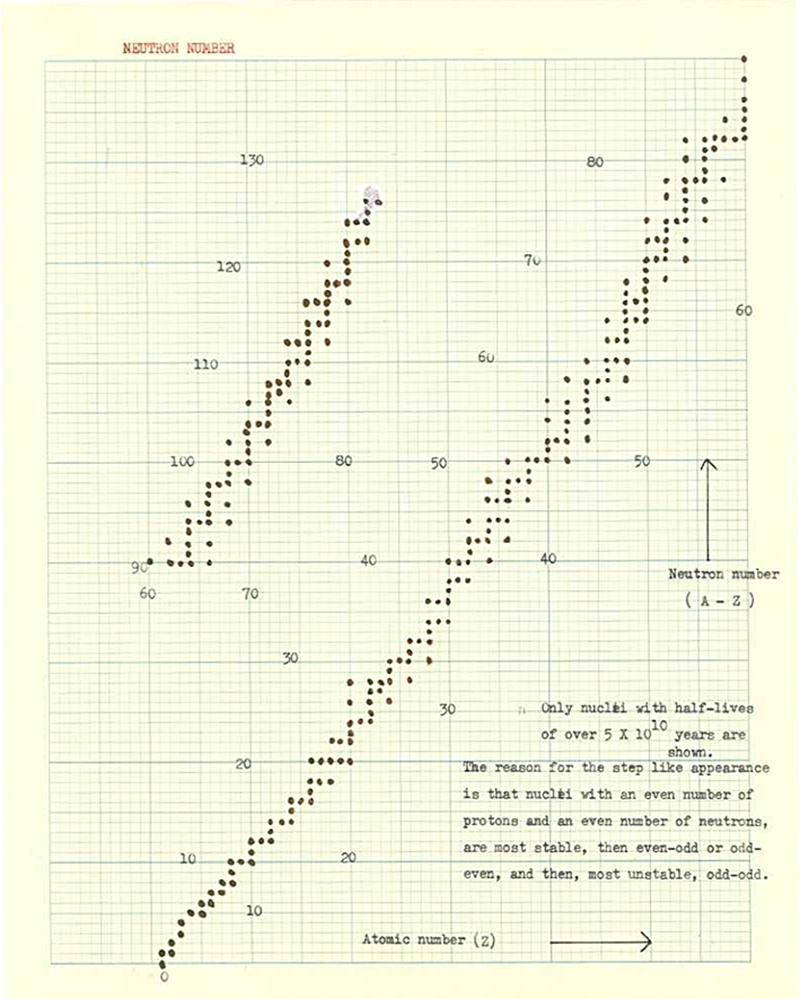
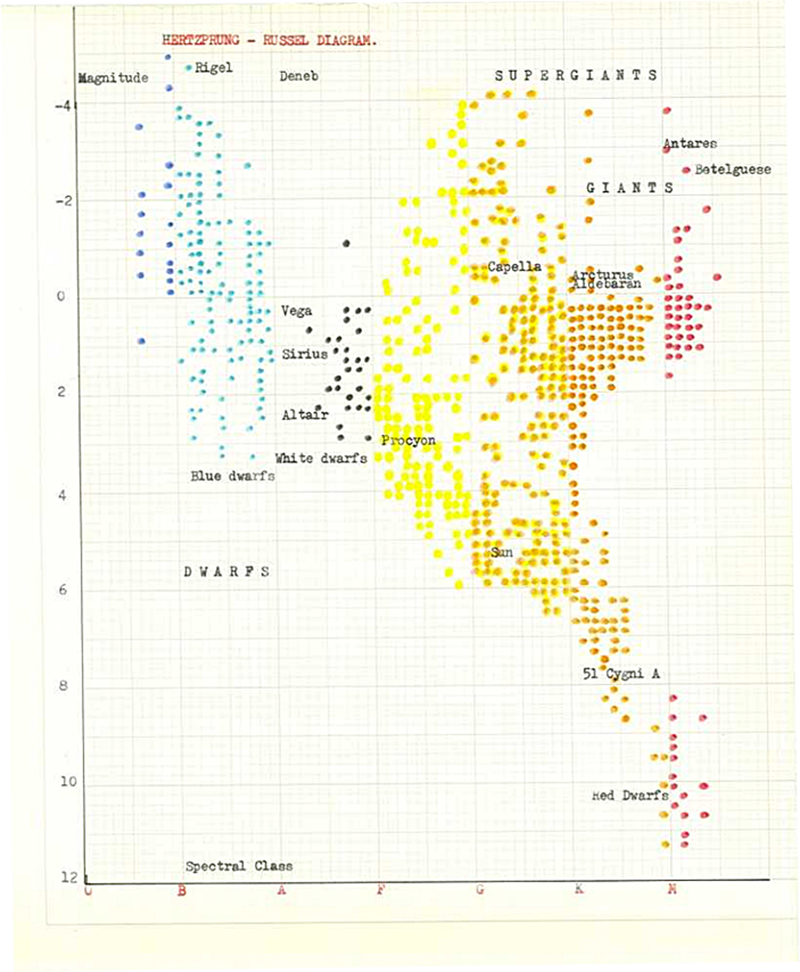
A few years ago I found it again (during the release of Wolfram | Alpha) and thought: “ Oh my gosh, I did the same thing all my life! "And then I started dialing numbers from the time when I was 11 or 12 years old to see if Wolfram | Alpha did the same thing: Of course , everything worked out:
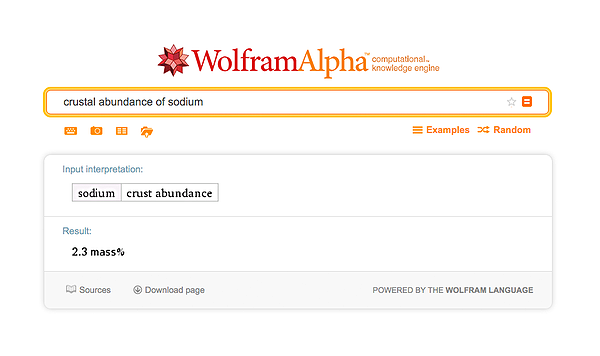
When I was 12 years old, following the British tradition, I went to the so-called public school, although in reality it was private. I went to Eaton - the most famous of these schools, which was founded 50 years before Columbus arrived in America. I even received the highest scholarship among children who entered in 1972.
Yes, all the time they wore tailcoats, and royal scholars like me also wore robes that protected from rain, etc. I thought I successfully avoided these annual Harry Potter-style photos, but once I was captured in the group picture:
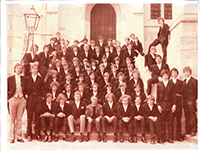
And at that time, with his Latin, Greek and mantles, I led a kind of double life, because my real passion was physics.
In the summer, when I turned 13, I put togetherbrief information about particle physics :
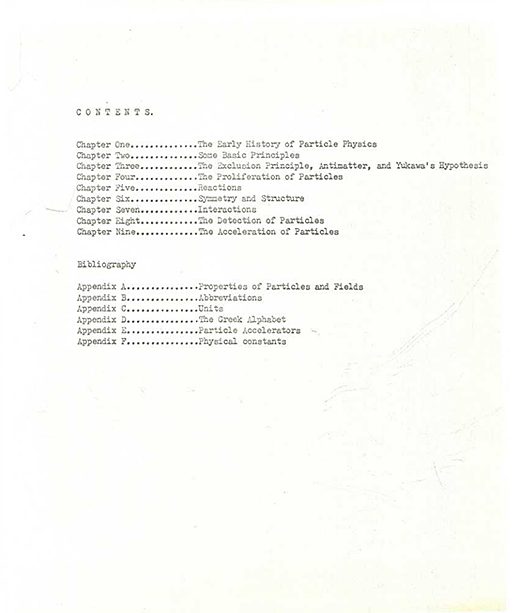
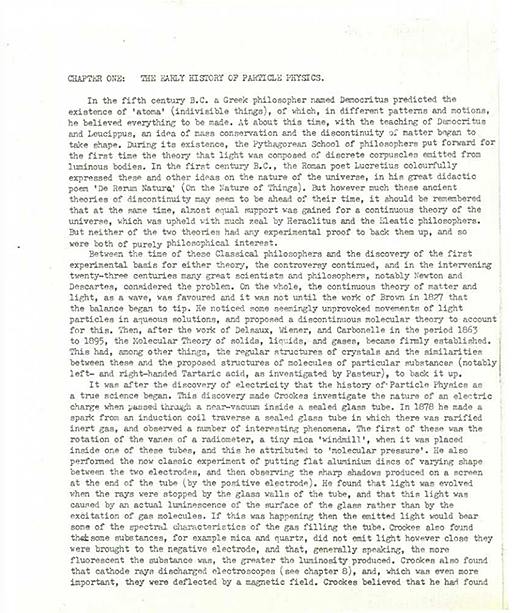
And I made an important discovery: even a child can discover interesting things . And then I began to try to answer questions on physics on my own or searched for answers in books, and by the time I turned 15, I began to publish articles on physics . No one asks how old you are when you submit an article to a physics journal. When I was 12, something important happened: I met my first computer. This is an Elliot 903C . This is not exactly the one I used, but similar: He appeared in Eton with my teacher Norman Routledge, who was a friend of Alan Turing
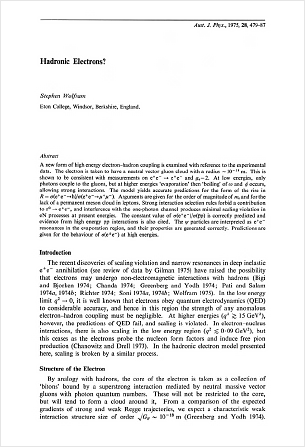
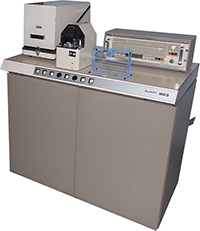
. It had an 18-kilogram 18-bit ferrite core programmed by means of a mylar tape, often in SIR (assembler).
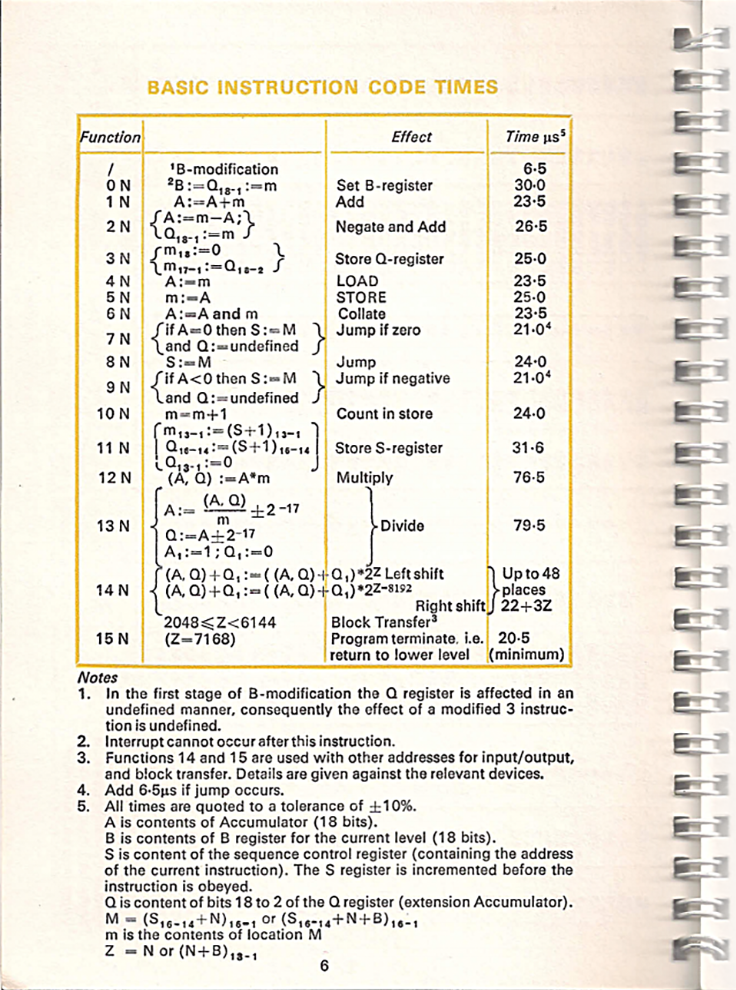
It often seemed that one of the most important skills was rewinding the tape after passing through the optical reader.
Anyway, I wanted to use a computer to do physics. When I was 12, I got this book : I assumed that the cover image was a simulated gas molecule, showing increasing randomness and entropy. As often happens, a few years later I discovered that this picture was actually a kind of fake. But when I was 12, I really wanted to play it using a computer.
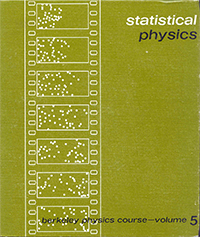
It was not so easy. Molecule positions were to be real numbers; it was necessary to have a collision algorithm, and so on. And in order to adapt to the Elliott 903, I ultimately simplified a lot - and came to what turned out to be a 2D cellular automaton.
Well, ten years after that, I made some great discoveries in the field of cellular automata . But then I was not lucky with my rule of the cellular automaton, and ended up dealing with them, without discovering anything. And in the end, my biggest achievement was writing boot punches for the Elliott 903.
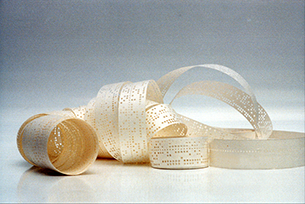
There is one serious problem with mylar tape: it can receive a charge of static electricity and chew holes, so that the bits will not be read correctly. Well, for my bootloader, I came up with error correction codes, and set them up so that if the check failed, the tape in the reader stopped, and you could pull it back a couple of meters, then re-read it.
OK, so by the time I was 16, I was publishing physics articles and even became recognizable, left school and went to work in a British government laboratory called Rutherford Laboratory , which was studying elementary particles.
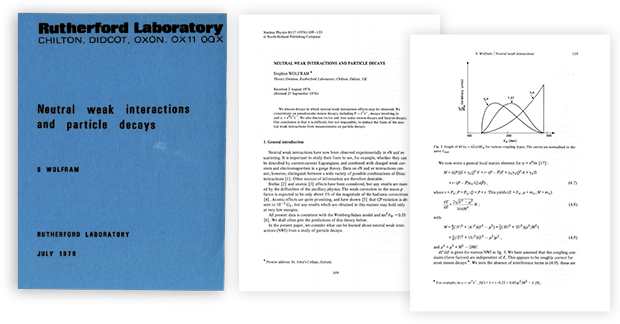
Now you may recall a school report card from which it was clear that I was not very good at math. Everything got a little better when I started using the slide rule, and then, in 1972, and the calculator. But I never liked doing math in school, or doing math in general. And in particle physics there is a lot of mathematics, so this dislike of mine was a problem.
At Rutherford's lab, two things helped me. Firstly, a desktop computer with a plotter, on which I could do very beautiful interactive calculations. And secondly, the mainframe for the things I programmed in Fortran.
After Rutherford's lab, I went to college at Oxford. For a very short time, I realized that this was a mistake, but in those days there was no need to attend lectures, so I just hid and did my research in physics. And basically I spent time in a well-conditioned underground in a nuclear physics building with terminals connected to computers and ARPANET .
And just then - in 1976 - I first started using computers for classes in symbolic mathematics, algebra, etc. Feynman diagrams in particle physics include a lot of algebra. And in 1962, it seems, the year three physicists met at CERN and decided to try using computers to work in this direction. They had three different approaches. One wrote a system called ASHMEDAI on Fortran. Another is under the influence of John McCarthy of Stanford - a system called Reduce in Lisp . And another wrote a system called SCHOONSCHIP on CDC 6000 in assembler with mnemonics in Dutch. Interestingly, a few years later, one of these physicists received the Nobel Prize . It was Tini Veltman - the one who wrote SCHOONSCHIP in assembly language .
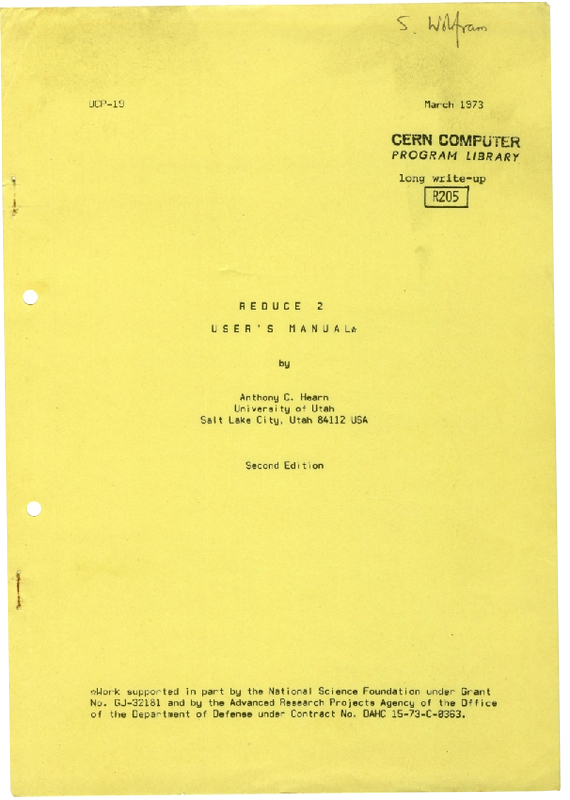
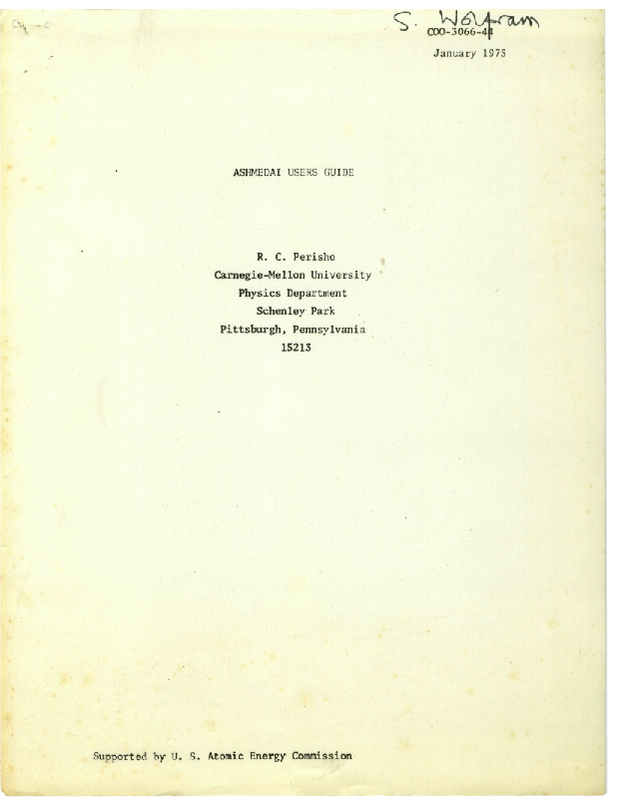
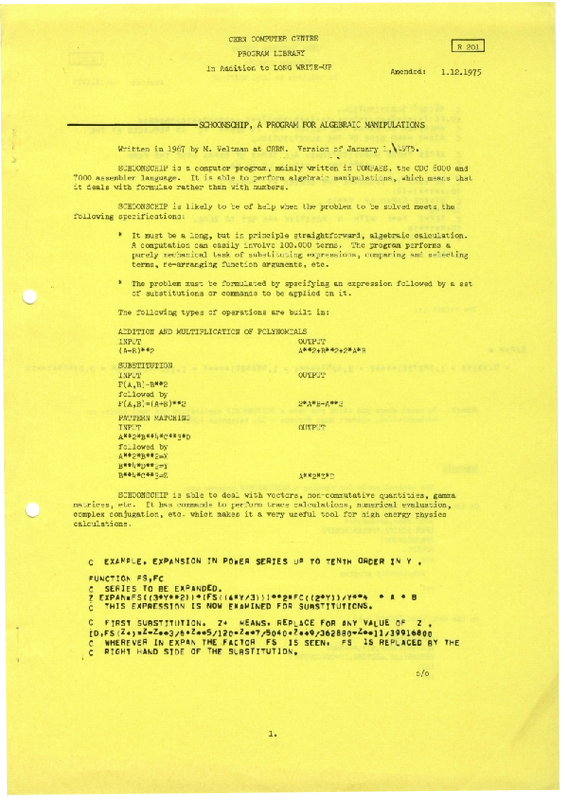
In any case, in 1976, few other than the creators used these systems. I started using them all. However, my favorite was a completely different system, written in Lisp at MIT in the mid-1960s. It was a system calledMacsyma . She worked on a Project MAC PDP-10 computer. And, what was important to me as a 17-year-old child from England was that I could get to her on ARPANET.
There was host 236. So I entered something like @O 236 and connected to the interactive operating system. Someone took the SW login. So I became Swolf and started using Macsyma.

I spent the summer of 1977 in the Argonne National Laboratory - where some ideas of physicists were tested in the mainframe room.
Then, in 1978, I went to graduate school at the California Institute of Technology. I think that by this moment I was the largest user of computer algebra in the world. And it was so cool that I could calculate all these things so easily and simply. I enjoyed it a lot using florid and complex formulas in my work.
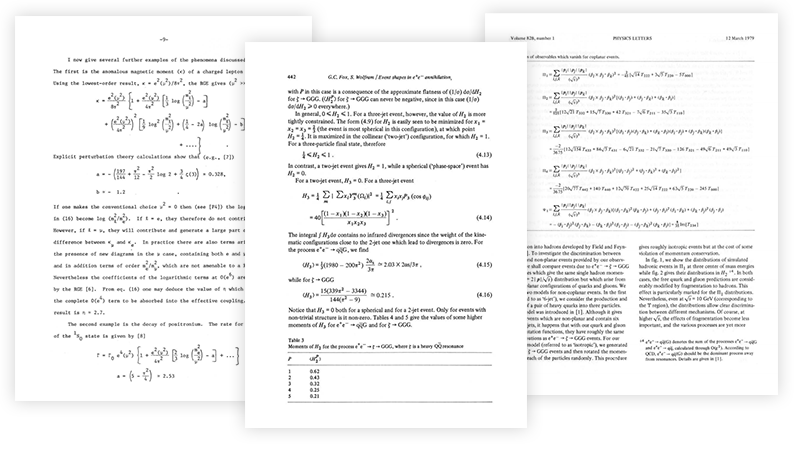
I have gained a reputation as a great calculator. Of course, she was 100% undeserved, because it was not me who considered it, but a computer. Although, in fact (to be fair), something remained with me: doing calculations for so long, I earned a new kind of intuition. I did not take the integrals too well myself; but I could go back and run ahead using a computer, intuitively understanding what it was worth trying, and then experimenting to see what worked.
I wrote large pieces of code for Macsyma. And somewhere in 1979, I ran into a wall - something new was needed. Notice the ominous MACSYMA RELOAD line in the diagram.

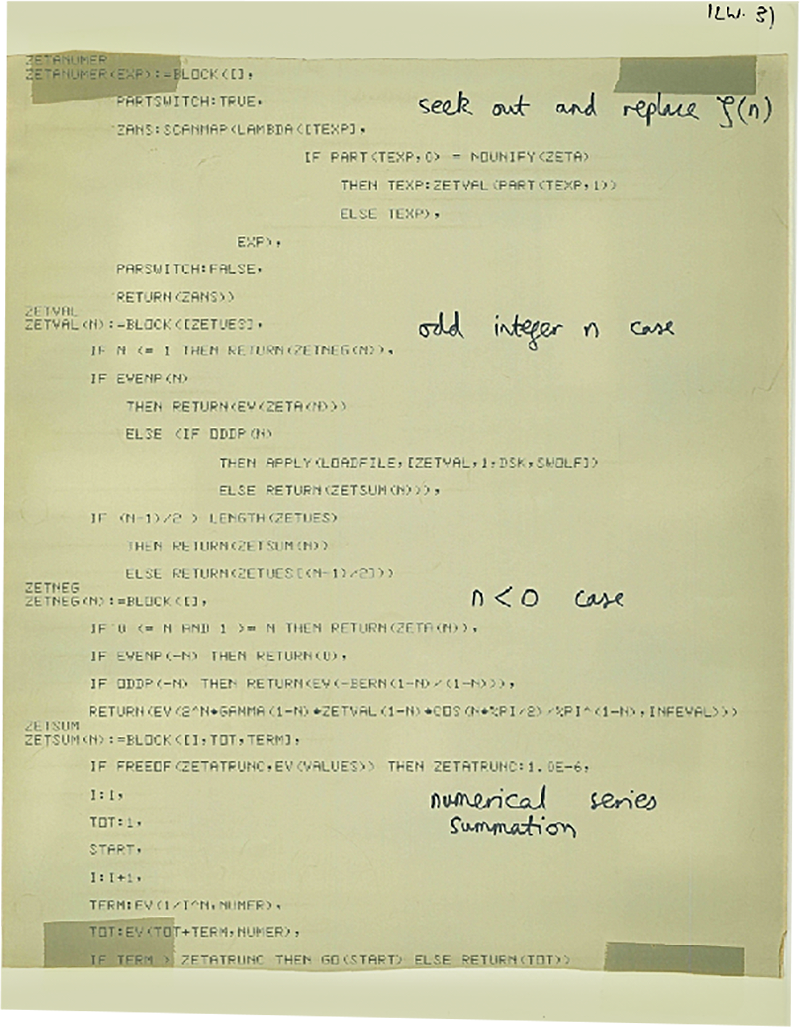
Later, in November 1979, and shortly after my twentieth birthday, I collected some papers, called them a dissertation, and received my doctorate . And a couple of days later I visited CERN in Geneva and began to ponder my future in physics (as it seemed to me then). The only thing I was sure at that time was that for my calculations I would need something other than Macsyma. It was then that I decided to build a system for my needs. And I began to create a specification .
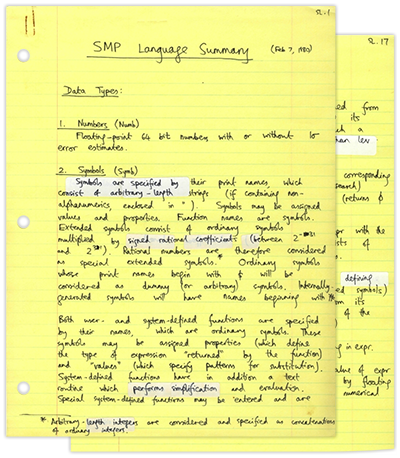
At first it was supposed to be ALGY - Algebraic Manipulator. However, I quickly realized that I had to do much more than just algebraic manipulations. I knew most of the general-purpose computer languages like Algol , Lisp, and APL . But for some reason they did not capture the area in which I wanted to create my system.
I think I did what I learned from physics: I went deep in order to find atoms and understand what was happening. I knew something about mathematical logic and the history of attempts to formulate something using logic, even at a time when my mother’s textbook on philosophical logic did not exist.
The history of these attempts to formalize is very interesting and is associated with many famous names: this is Aristotle , andLeibniz (see the post on Habré " A detailed look at Leibniz's legacy "), and Fredge , and Peano , and Gilbert , and Whitehead , and Russell , etc. But this is another conversation. However, in 1979, my thoughts led me to come up with a structure based on the idea of symbolic expressions and their transformations.
What I began to get, I called SMP: The Program of Symbolic Manipulations , and to work on it I began to attract people from all over the California Institute of Technology. Richard Feynman был на встречах, на которых я обсуждал структуру своей программы, и предлагал различные идеи для взаимодействия с системой. Тем временем физический факультет получил VAX 11/780, и после некоторых пререканий на нем запустили Unix. В то же время молодой студент-физик по имени Роб Пайк — создатель языка программирования Go — убедил меня, что я должен написать код для моей системы на «языке будущего»: C.
Я преуспел в написании кода на C, и некоторое время писал в среднем около тысячи строк в день. И к июню 1981 года при участии нескольких ярких личностей первая версия SMP была готова — вместе с большой книгой документации, которую я написал.

Good; you may ask: can we see SMP? When we were working on SMP, I had the brilliant idea that we should protect the source code with encryption. And, you guessed it, after three decades, no one could remember the password. Until some time ago one situation arose.
Realizing my other idea, I used a modified version of the Unix encryption program to make encryption more secure. In honor of the 25th anniversary of Mathematica , we implemented a crowdsourcing project to crack encryption a couple of years ago. Unfortunately, compiling the code was not easy - although with the help of a 15-year-old volunteer, we finally got something working.
And here it is: it works inside a VAX virtual machine emulator, so I can show (for the first time in 30 years) a running version of SMP.
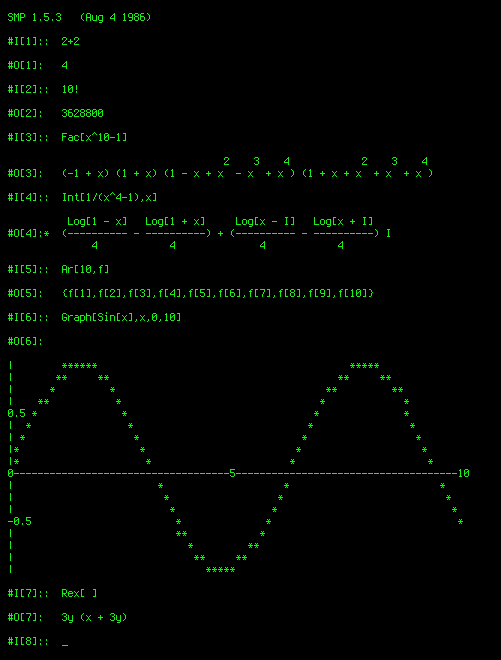
SMP was a mixture of good and not so good ideas. For example, Tini Veltman, the author of SCHOONSHIP, suggested a bad idea to me: he proposed representing rational numbers as a floating point, so that faster floating-point instructions could be used on several processors. However, there were many other bad ideas.
There were interesting ideas - like the ones I called “projections”: in fact, the union of functions and lists. With the exception of some troubles, they were wonderful. And something strange happened with almost all vectors with consecutive integer indices.
But overall, SMP worked very well, and of course I decided that was a very useful thing. So now the next problem was to decide what to do with it. I realized that for such work you need a real team, and the best way to get it is to transfer the business to commercial footing. However, at that time I was 21 years old, and I did not know anything about business.
Then I came to the university office of technology commercialization and asked them what to do. But it turned out that they did not know, because " basically professors do not come to us; they open their own companies ." “ Well, ” I said, “ can I do this? ” And then the lawyer pulled out some kind of manual, looked into it and said: "it says that the copyright for the materials belongs to their creators, and so does the software, so yes: you can do whatever you want . "
So I went out to try to create my own company. Although in the end it turned out to be it’s so simple because the university suddenly decided that I shouldn’t have done what I wanted.A
couple of years ago, when I was in California Tech, I came across a 95-year-old guy who was the rector at the time and who, finally filled out for me the rest of the details of what he called de Wolfram’s scrap . "It was stranger than you could imagine. I won’t talk about it. Suffice it to say that the story began with Arnold Backman, a California-Technological post-doc from 1929, which claimed the rights to the pH meter and founded Beckman Instruments - and then, in 1980, as chairman of the board of trustees of the same institute, he was upset that genetic sequencing technology had been discovered in Caltech, and left in order to create Applied Biosystems .
The company I created survived the storm, even if I eventually left the California Institute of Technology, and he, in turn, put an end to the strange software ownership policy, which for a long time influenced their efforts to find personnel in the computer field.
Founding Computer Mathematics CorporationI haven’t done anything grand. I invited a person (who was twice as old as me) to the position of CEO. And pretty quickly, everything began to move away from what I thought made sense.
One of my favorite moments of insanity was the idea of getting into the hardware business and building a station to launch SMP. Well, at that time not a single station had enough memory, and the Motorola 68000 processor did not support virtual memory. As a result, a scheme was concocted in which two 68000-xs would randomly run the command, and if one of them found an error on the page, it would stop the second one to extract the data. I thought it was crazy. And it so happened that at Stanford I met a graduate student named Andy Bechtolsheimdemonstrated at Stanford University's network - SUN - with a workstation in a cardboard box.
But the worst part is that it was 1981, which means that the idea that AI - in the form of expert systems - was a hot topic prevailed. Thus, the company merged with another company that made expert systems, forming what was called Inference Corporation (which eventually became NASDAQ). SMP became a cash cow, a copy of which was sold for industrial and state research laboratories at $ 40,000 apiece. Venture capitalists were convinced that the future was with expert systems, and soon after that I left.
Meanwhile, I became a great specialist in university intellectual property policy issues - and in the end I went to work at the Institute for Advanced Studies in Princeton, whose director said very kindly that since they had “ given away his computer ” after von Neumann ’s death , they currently do not claim intellectual property rights. I completely went into basic science - I worked on cellular automata and found some things that seemed interesting to me. Here, below - I'm with my workstation (SUN) and the cellular automata running on it (and yes - the mollusk looks like a cellular automaton):
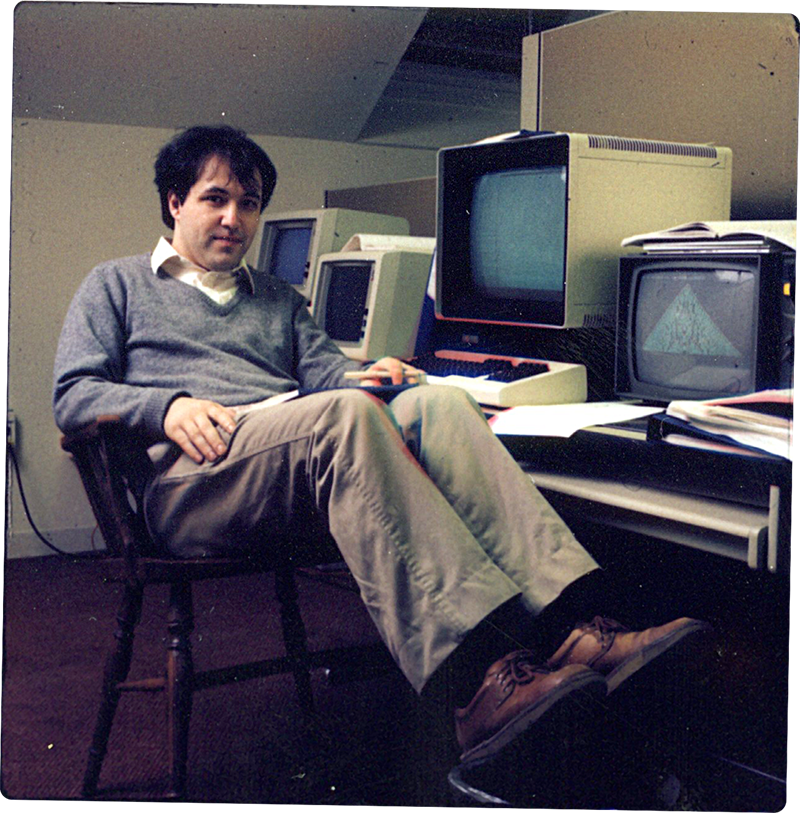
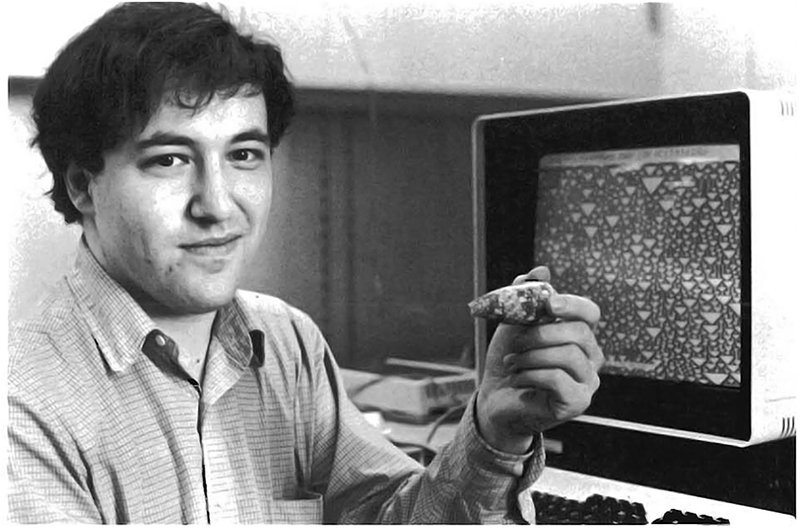
I did some consulting work, mainly as part of a technology strategy; it was very informative for me - especially how it was not necessary to do. I worked a lot with Thinking Machines Corporation . I think that my most important contribution was watching a WarGames movie with Danny Hillis , when I said to him at the exit from the cinema: “ Maybe your computer should also have light bulbs? ” These bulbs are no longer necessary for Connection Machine computers , but still play an important role in museums.
Basically, I worked in the mainstream of fundamental science, but I decided (" because it should just be") реализовать проект создания интерпретатора для С, который мы назвали Ixis. Я нанял несколько молодых людей, одним из которых был Цутому Шимомура, которого я несколько раз спасал из его хакерских проделок. Я сделал ужасную ошибку, когда самостоятельно начал писать скучный код, который никто другой писать не хотел, так что в результате я написал (впрочем, довольно милый) текстовый редактор, но весь проект провалился.
В то время я взаимодействовал с компьютерной индустрией всеми доступными способами. Я помню Натана Мирволда (ставшего потом аспирантом по физике в Принстоне), который приходил ко мне спросить, что делать с разработанной им системой окон. Мое основное предложение заключалось в том, чтобы "продать его в Microsoft". Shortly afterwards, Nathan became Microsoft CTO.
And by 1985, I had done a lot of basic science, so I was very pleased and tried to use it all to get started with what I called the study of complex systems . In I ended up getting involved in an organization called the Rio Grande Institute, which later became the Santa Fe Institute , which encouraged them to do this kind of research, but I was not sure of their capabilities, and decided to open my own research institute itut.
So I've been to a number of different universities -. in fact, to get the rate Won University of Illinois- partly because they thought it would increase their chances of getting funding from the Beckman Foundation, as a result. So, in August 1986, I went to the University of Illinois, on the Champaign-Urbana fields, 100 miles south of Chicago.
I think that I was good at recruiting and setting up all kinds of things for the new Center for Integrated Systems Research. But after several weeks I began to think that all this turned out to be a big mistake. I spent all my time managing and trying to raise money, and not doing science.
So I quickly came up with plan B. Instead of helping other people do science, I had to set things up so that I could do science myself as efficiently as possible. This meant two things: first,I should have had the best possible tools ; and secondly, I needed the most favorable conditions for myself .
I continued to use various tools during my studies in science. It was SMP. Quite a lot of C. PostScript , and graphics libraries. And a lot of my time spent putting all these things together. And I decided that I should try to create a single system that would do everything that I want, and that could develop endlessly.
Meanwhile, personal computers reached a level that allowed me to run on one of them the system that I needed. From my experience with SMP, I knew a lot about what to do and what not, so I started designing and building what later grew up in Mathematica .

I had plans to write documentation to determine what exactly to create. I wrote a bunch of lines of code, for example, for pattern matching, - a surprisingly large amount of which is still in the system after all these years. Mathematica's structure was in many ways less radical and less extreme than SMP. SMP was using the idea of converting symbolic expressions - and in Mathematica I saw as my goal the development of a language that effectively covers all possible programming paradigms.
Of course, Mathematica was not called that before. At first it was Omega . Then there were other names. Polymath . And Technique . Below is a list of names. I was horrified when I realized how many of them (even really stupid ones) were used in the future for naming products.
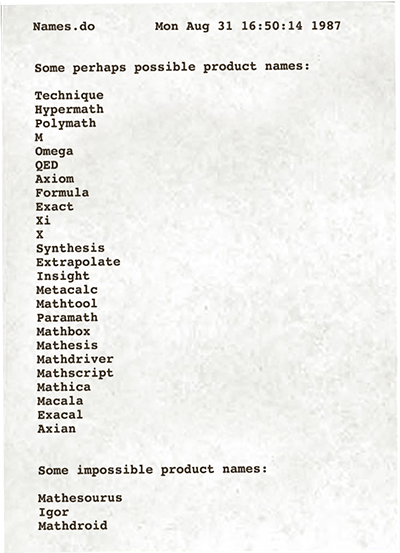
In the meantime, I began to research how to build a company based on the system. My original model assumed something like what Adobe was doing at the time with PostScript. It so happened that the first person to show interest in what I was doing was Steve Jobs , who was involved in NeXT .
We spoke with Steve about the name of the product. Of all the Latin words that I taught at school, I liked “ Mathematica ” the most , but I thought that such a name was too long and heavy. Steve insisted that this name was suitable - and developed a whole theory about the use of common words and their romanticization. In the end, he convinced me.
It took about 18 months to create the first version of Mathematica. I was still officially a professor of physics , mathematics, and computer science at the University of Illinois. In addition, I spent all my time creating software, and then concluding deals.
We made a deal with Jobs and installed Mathematica on NeXT :
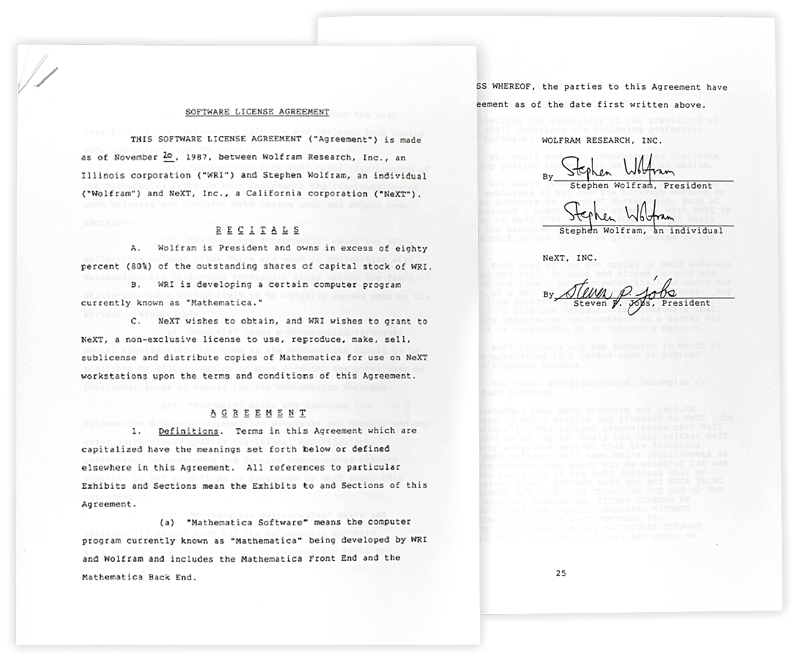
We made many more deals: with Sun - thanks to Andy Bechtolsheim and Bill Joy ; with Silicon Graphics thanks to Forest Basket . With Ardent - thanks to Gordon Bell and Cleve Mowler. With AIX / RT (part of IBM ) - with the participation of Andy Heller and Wiki Markstein .
And in the end, we set a release date: June 23, 1988 .
In parallel with the preparation of documentation for the system, I wrote a book called Mathematica: a system for mathematical work on a computer . It was supposed to be published by Addison-Wesley , and this was the most advanced stage of the release. It all ended up with serious difficulties, because the book was full of PostScript graphics, and no one could get a high enough resolution. So in the end I just gave the hard drive to my friend in Canada, who hada photo- composing company , and he and I went with his photo-typing machine all weekend, after which I flew to Logan Airport in Boston and handed over the finished film to an Addison-Wesley employee.
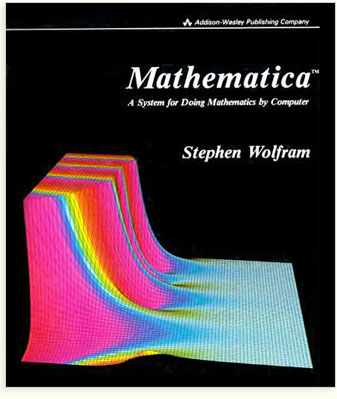
We decided to advertise Mathematica in Silicon Valley - and, in particular, in a place called Techmart, Santa Clara. At that time, Mathematica could not work under MS-DOS due to memory limitations (640K). Thus, the only client version was for Mac. And the day before the announcement, we put the discs in boxes for delivery to ComputerWare , the software store in Palo Alto.

Making an announcement was a good idea. Thanks to him, we met Steve Jobs, although he was then a non-public person. Larry Teslerfrom Apple himself made a demo. John Gage from Sun came up with all the speakers signing the book:
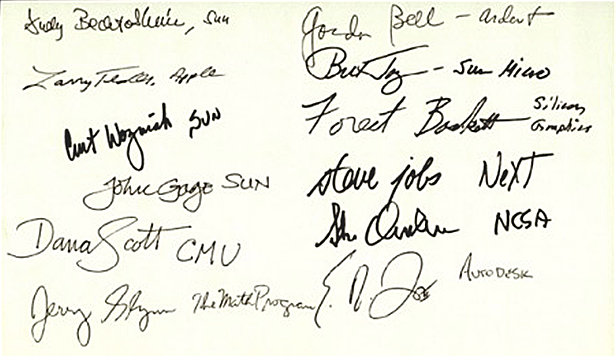
So Mathematica was launched. The Mathematica book became a bestseller in bookstores - and thanks to this, people began to understand how to use the Mathematica system. I was very pleased to observe that the system is in demand for all areas of knowledge and for every age - and when people who have never used computers before began to calculate something on their own.
It was fun to browse the registration cards. Many interesting and famous names. There were sometimes funny coincidences. For example, when I just saw an article about Roger Penrose and his new book in a magazineTime with the headline “ Those Computers Are Dummies, ” and then there was a registration card for Mathematica in the name of Roger.
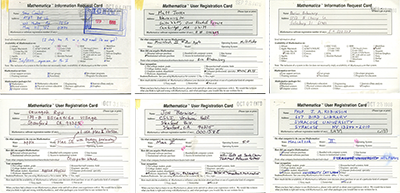
As part of the development of Mathematica, we have collected all kinds of exotic machines from all computer companies. Sometimes it was at hand — for example, when the Morris worm penetrated the Internet, and on our outlandish Sony gateway machine there was a Japanese OS that the worm did not take.
There were still different stories with connections. My favorites are related to Cray-2 . Then, with great difficulty, we compiled Mathematica and were ready for the first calculation. And someone entered 2 + 2. And - I'm not joking - the result was "5". I think the problem was with integers and floating point.
Here's the price list of 1990 - a short walk along the alleys of computer memory:

The NeXT release, complete with Mathematica, gave a new impetus to development. I think Steve Jobs did a good job because many and completely different people got NeXT computers to run Mathematica. In the Theory group at CERN, the system administrator was Tim Berners-Lee , who decided to conduct a small network experiment on these machines.
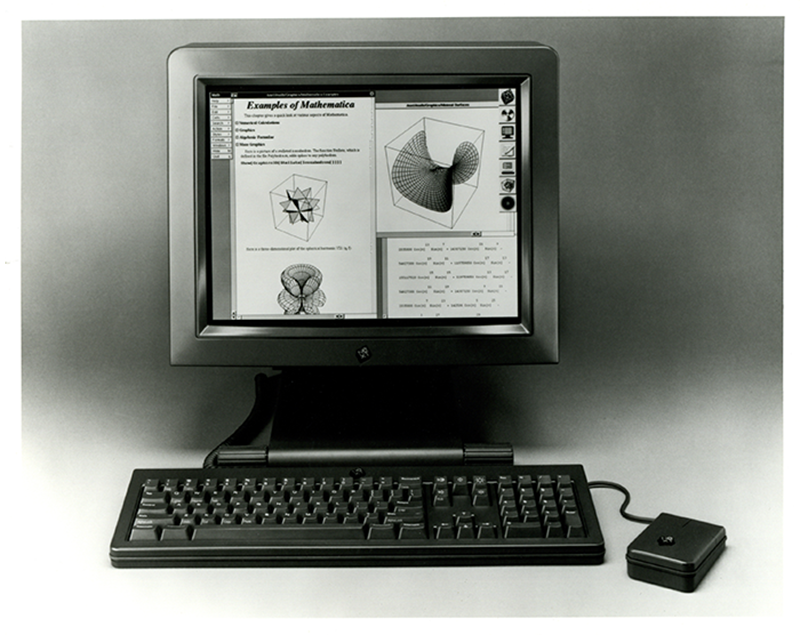
Then a couple of years the company grew and developed, and we had about 150 people. And I thought: I built it all because I wanted to do science in my own way, so is it time to start? In addition, I introduced new ideas too quickly; I was worried that the company might just fall apart. In any case, I decided to take a creative vacation - for six months or a year - in order to do basic science and write a book about it.

So I moved from Illinois to Auckland Hills - right before the big fire that nearly destroyed my home. And I began to remotely manage the company, using Mathematica to do science. The good news was that I began to study many sciences. It was a moment when it was as if you were first looking at the sky through a telescope - only now it wascomputing universe of possible programs .
It was really great. But I just could not stop, because I continued to discover more and more different things. So over 10 years have passed. I really was a hermit living in Chicago and accessible only virtually ... Although during this time my three older children were born, so there were still people around!
I thought that maybe there was a coup in the company - but no. The company continued to grow stably. We continued to implement new projects.
Here is our first website , launched October 7, 1994: It appeared shortly after we started supporting computing on the Internet :

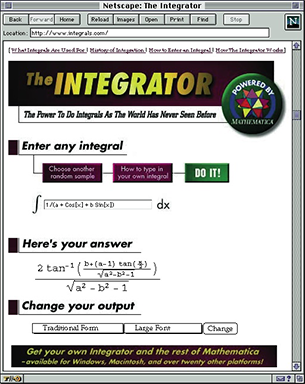
In 1996, I took a break from my classes to complete the new large version of Mathematica. Back in 1988, many people used Mathematica via the command line. In fact, she still is. 1989 ^ 1989 is the main calculation that I have been using since 1989 to check the speed on a new machine. The basic Raspberry Pi conveys a sense of how everything was at the very beginning.
So, in 1988, we created documents (including not only text, but also graphics, sounds, calculations) for Mac and for NeXT, and called them notepads .
I guess I should tell you something about software development in the Mathematica system. The main code was written in C (an object-oriented version of C, which we ourselves developed, becauseC ++ was not efficient enough by 1988). Even at the very beginning, part of the code was written in the highest-level language Mathematica, which is now called the Wolfram Language - over the years, more and more code has been written this way.
Well, in the beginning it was very difficult to get a frontend that could be run on different machines. And we made a database of different types of code - for Mac, NeXT, Microsoft Windows and X Windows. And in 1996, we merged them together. And for almost 20 years, the code has been gloriously fused together; and now we again got separate code bases for browsers and mobiles, so the story repeats itself.
My Mathematica book has become quite huge because of everything that we included in it. We also had several “advertising media”, which we called
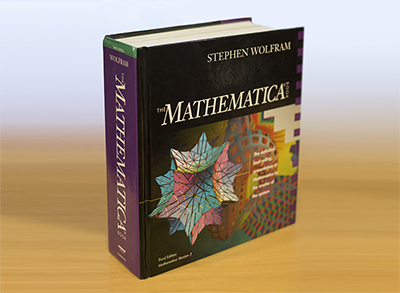
MathMobiles decorated as moving billboards.
Mathematica was everywhere and was used for a variety of tasks. And, of course, sometimes unusual situations occurred. For example, in 1997, Mike Foel at the Mir space station got a computer with the Mathematica system. True, then an accident occurred: there was a depressurization in that part of the station where the computer remained. While the station somersaulted, Mike tried to debug something - he wanted to do it using Mathematica. As a result, he received a new copy during the next delivery and was installed on a Russian PC.
However, a problem arose. Our DRM system immediately reported: “ This is a Russian PC; you cannot run Mathematica with a US license on it!". Мы тогда получили самый необычный звонок в сервисный центр: "Пользователь находится на вращающейся космической станции". К счастью, после простой смены пароля Майк решил уравнения, и космическая станция была стабилизирована.
В 2002 году, после десяти лет работы, я, наконец, закончил свой научный проект и большую книгу:
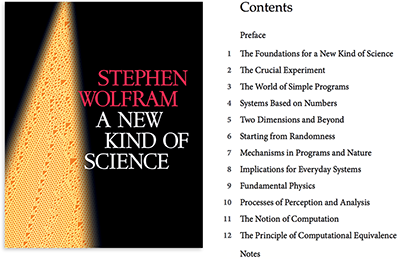
Во время моего "десятилетия науки" компания стабильно росла, и мы создали потрясающую команду. Однако благодаря тому, что я узнал во время своего периода затворничества, я понял, что компания могла работать более эффективно. Мне было приятно вернуться, чтобы снова сосредоточиться на работе. И я довольно быстро понял, что структуру, которую мы построили, можно применить ко многим другим вещам.
Mathematics was the first major application of the Mathematica system, but the symbolic language I created was much more general. It was interesting to see what we can do about it. In 2006, it became possible to symbolically represent user interfaces, as well as create them (in computational terms). This led to the creation of CDF (Computed Document Format), as well as the Wolfram Demonstrations project . We started to experiment. Some experiments failed. Some have gone to the wrong steppe. We wanted to make a poster with all the facts that we know about mathematical functions. At first it was supposed to be a small poster, but soon it was 36 feet long, so in the end it turned into
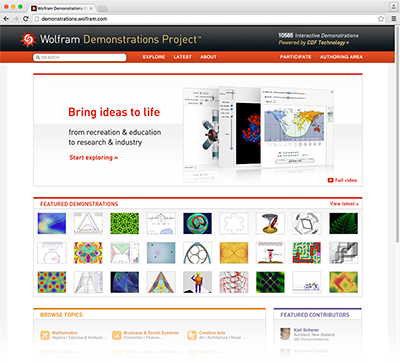
The Wolfram Functions Site with 300,000+ formulas:

At that time everyone was fond of ringtones on mobile phones, and I wanted to create my own ringtone. We figured out how to use cellular automata to compose infinitely diverse melodies, and posted them on the Internet . It was an interesting experience of AI creativity, and people liked this music. But after a six-month fuss with telephone operators, we did not sell a single ringtone. If you go to this site, you will see that it does not work with current versions of the browser. This will be fixed soon. The webMathematica server just worked unchecked for ten years, and now no one knows how it works ...
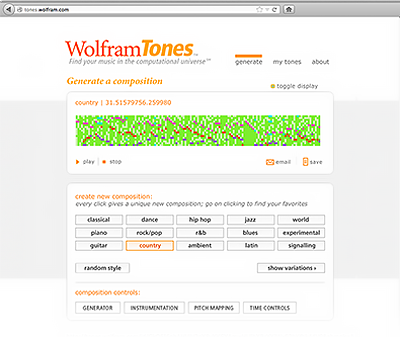
Mathematica for many years was the only product of the company, and now we are going to not only add new features to it, but also come up with all kinds of other things.
I already said that when I was a child, I was interested in how to " make knowledge computable ": to take the existing knowledge of our civilization and build something that can automatically calculate the answers to questions . For a long time, I assumed that for this it would be necessary to make some kind of brain-like AI. So in 1980, I worked with neural networks, but could not do anything interesting with them. And every few years after that, I gradually thought over the problem of computability of knowledge.
However, later I discovered a pattern that I calledprinciple of computational equivalence . In accordance with it, there is no clear boundary between “ intellectual ” and “ just computational ”. As a result, I began to think that perhaps I did not need to create a “ brain ” to solve the problem of computable knowledge.
At the same time, my youngest son, who was then six years old, started using Mathematica a bit. And he asked me: “ Why can't I just tell the system what I want in plain English? ” I began to explain how complicated it is. But he continued: " There are not many different ways to say a particular thing."etc. And it made me think, in particular, about using the science I built to solve the problem of understanding natural language.
At the same time, I started a project to work with big data of all kinds. It was very interesting to come to a large library and figuring out what is needed in order to make it all computable. Alan Turing made some assessments like this - however, they were somewhat complicated. In any case, I got experts on all topics. And I began to create a technology and management system to sde make the data computable.
It was not entirely clear how this would work, and even many of my management team were skeptical. Everyone thought it would be another WolframTones. The good news was that our core business was strong. I would never make a company public, and I had no investors other than myself. So I did not answer to anyone. I could just do Wolfram | Alpha - the way I carried out all long-term projects throughout the history of our company.
And despite all the fears, Wolfram | Alpha worked. I must say that when the demo was finally ready, my managers were completely delighted with what happened.
Complicating matters is the fact that Wolfram | Alpha is (like Mathematica and Wolfram Language) an endless project. However, we have reached the point after which we could not further develop without communicating with real users in real natural language.
To go into real life, we chose May 15, 2009. However, a problem arose quickly: we had no idea how high the traffic would take off. And then we could not use Amazon or anything else: in order to increase productivity, we had to do parallel computing on bare metal.
Michael Dellprovided us with enough computers. After talking with some people, I began to worry that they had services that were bent at the start. So I decided to use a tricky trick. I decided that we would launch Internet TV in real time, so if something terrible happens, then at least people will know what is happening, and maybe have some fun. So I got in touch with Justin Kahn , who did justin.tv then (and the first company of which I was not able to invest on the very first YCombinator ), and we agreed to start.
Building our “flight control center” was fun, and we also made some good dashboards, many of which we actually use so far. On launch day, I was worried that it would be the most boring TV in the world: at the appointed time, I just click the mouse and we will be shown live, and that will be the end.


I must say that this was not. You know, I never watched that broadcast . I don’t know how many terrible things they fix - especially with last-minute network configuration problems.
Но, пожалуй, самые запоминающиеся вещи были связаны с погодой. Мы находились в центральной части штата Иллинойс. А примерно за час до нашего грандиозного старта пришел отчет о погоде: гигантский торнадо направлялся прямо к нам! Вы можете увидеть всплеск скорости ветра с помощью Wolfram|Alpha (исторические данные о погоде):
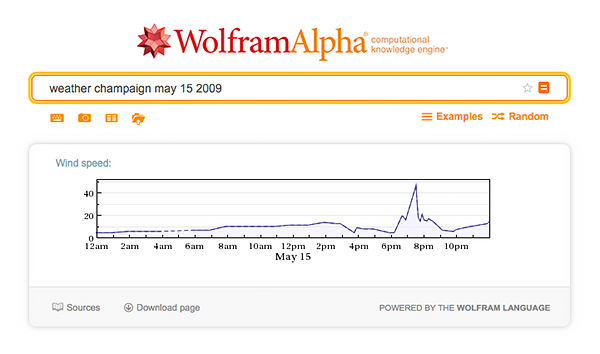
Но, к счастью, торнадо прошло мимо. И, конечно, в 9:33:50 вечера по центральному времени 15 мая 2009 года я нажал на кнопку, и началась трансляция запуска Wolfram|Alpha. Многие люди начали пользоваться ею. Некоторые люди даже не поняли, что это не поисковая система.
Затем начали поступать отчеты об ошибках. А вот так мы делали в самом начале, когда что-то не получалось:
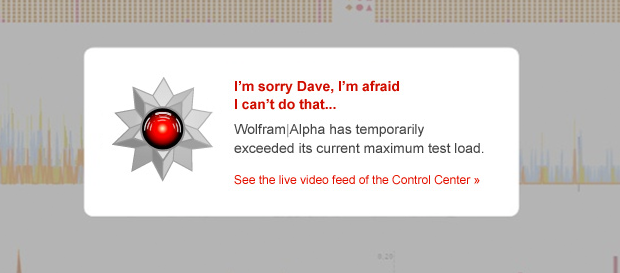
And in one of the error messages, someone said: “ how did you know that my name is Dave ?! ". The first night we received all kinds of error messages - here are a couple of them:
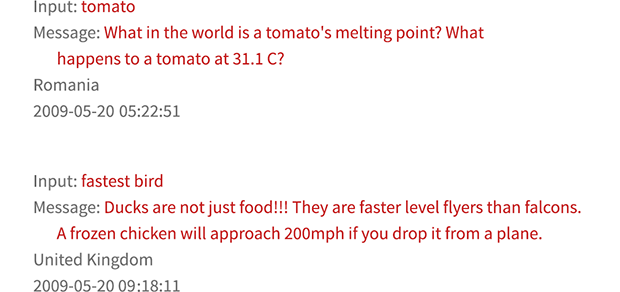
Not only people started using Wolfram | Alpha; companies too. With the help of Bill Gates from Microsoft, Wolfram | Alpha got connected to Bing . And a small company called Siri plugged it into her app.Some time later, Apple bought Siri, and with the participation of Steve Jobs (who was already very ill at that time), Wolfram | Alpha eventually began to feed part of Siri's knowledge. So, we are gradually moving to our time. significant project at the moment is
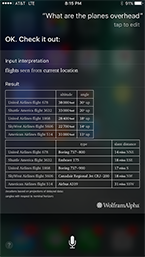
Wolfram Language . In fact, this is not such a modern thing. Back in the early 1990s, I was going to pull out the language component of the Mathematica system - we thought to call it M Language. And we even had people working on it: for example, Sergey Brin , who in 1993 was an intern. But then we did not quite understand how to distribute it.
However, the idea was waiting in the wings. Until we got Wolfram | Alpha, and clouds, and so on. I must say that I'm tired of people who think that the Mathematica system is purely mathematical in nature. It grows and grows with each version:
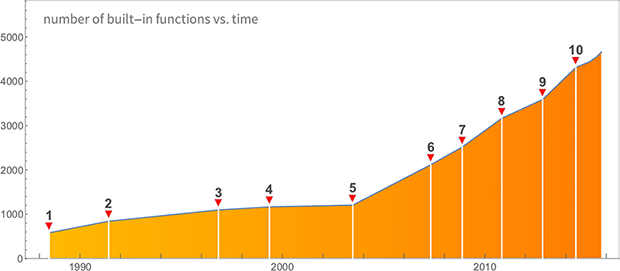
And although we continued to strengthen the mathematical component, in 90% of cases there was no mathematics at all . Our approach can be described as "let's implement everything in a row, "and it worked well. We really were on the beat when we invented all these meta-algorithms and automation systems . I realized that in combination with Wolfram | Alpha we got a language based on knowledge of computing and the world at large, there
was one more thing - the understanding that our programming paradigm could be used not only for computing, but also for deployment - especially in the cloud.
Mathematica was widely used in R&D and education, and with a few exceptions and financial industry. One of dei Wolfram Language (and our cloudtoo) - to make knowledge-based programming work everywhere - from supercomputers to embedded devices. There is so much more to say about this ...
We have done many more other things. Here, on the graph, the growth of the Mathematica system over the first 10,000 days is shown:

With our technology, we did many different things. I don’t know why I have this picture here, but in any case I have to show it: it was on a commemorative T-shirt of our image identification project , which we did a year ago. In our image ID, this beast was defined as an anteater because we lost the aardvark shown here:
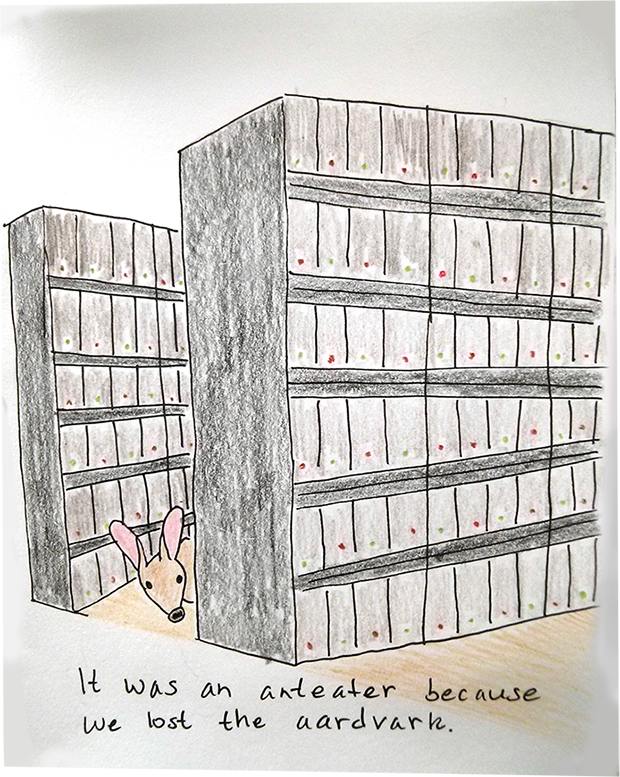
And only in the last few weeks did we open the Wolfram Open Cloudto allow everyone to use the Wolfram Language on the Internet - this event was the culmination of 30 or even 40 years of work.
For almost 30 years, I worked hard for the Wolfram Language to be well thought out - and now it is getting bigger, and its various parts are working better together. I must say - it's great to see that all the efforts put into it have paid off.
This is so cool. We have a completely different kind of language, suitable for communicating not only about computing, but also about the world with computers and people . You can write tiny programs. For example, Tweet-a-Program : Or you can write large programs - such as Wolfram | Alpha , consisting of 15 million lines of Wolfram Language code.
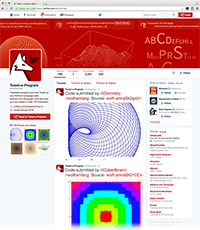
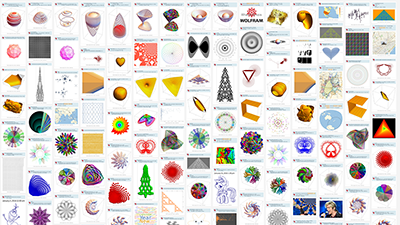
It is great to see industry companies starting to base their technology on Wolfram Language. I think that with the help of Wolfram Language, you can teach children computational thinking. Recently, I even wrote a book about this : I can’t imagine how it would have happened if I, the 12-year-old, had the first computer language as the Wolfram Language, and not the Elliott 903 machine code. I think many of my questions are like AI an answer would already be given. But in fact, I am very happy that I lived at that time and became part of these decades of evolution of incredibly important ideas, and also discovered some things that helped their formation and development.
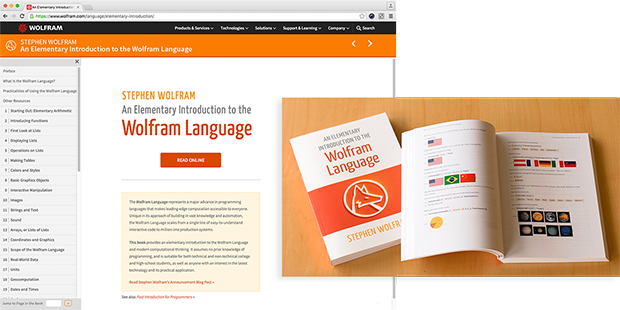
Record of Steven Wolfram's speech (in English):

Translation of Stephen Wolfram's post " My Life in Technology — As Told at the Computer History Museum ".
Many thanks to Polina Sologub for help in translating and preparing the publication.
Usually I’m interested in the future. However, the story, in my opinion, is interesting and informative, and I study a lot of it, too. Most often these are life stories of other people. But the Museum of Computer History asked me to tell today about my own life and about the technologies that I created. That is exactly what I am going to do.
Now a unique time has come for me - a lot of things that I have been working on for more than 30 years have begun to bear fruit.
My focus is on Wolfram Language- A new kind of language based on knowledge (in which a huge amount of knowledge is built-in - both about computing and about the world as a whole). Wolfram Language is maximally automated so that the path from the idea to the actual implementation is as short as possible.
Today I want to talk about how I went about creating the Mathematica and Wolfram | Alpha systems .
I will have to talk a lot about my own story: mainly about how I spent most of my life doing science and technology. When I look back, a lot of what happened seems inevitable and inexorable. And something I did not expect.
But let me start from the beginning. I was born in London in 1959 - so yes: I'm godlessly old (at least by my current standards). My father ran a small company (international textile trade) for almost 60 years, and also wrote several science fiction novels . My mother was a professor of philosophy at Oxford . The last time I was at Stanford's bookstore, I accidentally saw her textbook on philosophical logic.
You know, I remember when I was 5 or 6 years old, I missed some party with a bunch of adults, and here a very long conversation about some very respected philosopher from Oxford ended with the words: “the day will come, and this child will become philosopher"Well, they turned out to be right. It's pretty funny what happens.
That's how I was then:

I went to elementary school in Oxford - to a place called Dragon School (I guess this is probably the most famous elementary school in England ). Wikipedia believes that the most famous people from my class at the moment are me and actor Hugh Laurie .
Here is one of my school reports (I was 7 years old). This is a class rating. So I excelled in poetry and geography, but not in mathematics (and yes - this is England, so we had the subject of “Bible study”). But at least least it says: " he is full of spirit and determination; he must go far ... "

It was 1967, and I studied Latin and so on; but what I really liked was the future. At that time, the most future-oriented was the space program. And I became very interested and began to collect all the information I could find about each launched spacecraft, and put the small notebooks in which I saved all the information together. And I found that even from England it was possible to write to NASA and get all the material for free by mail.




At that time, it was assumed that there would be colonies on Mars, and I began to make small projects for spacecraft.




I became interested in engines and ion batteries, and when I was 11 years old, my main interest was physics.



And I found that you can learn a lot and quickly if you just read books (this had nothing to do with school). I chose various fields of physical science and tried to organize knowledge about them into a system. In the end (when I was already 12) I spent the summer bringing together all the facts about physics. I suppose you could call some of this “visualization.” And, indeed, now, like so much more, it’s easy to find on the Internet :




A few years ago I found it again (during the release of Wolfram | Alpha) and thought: “ Oh my gosh, I did the same thing all my life! "And then I started dialing numbers from the time when I was 11 or 12 years old to see if Wolfram | Alpha did the same thing: Of course , everything worked out:

When I was 12 years old, following the British tradition, I went to the so-called public school, although in reality it was private. I went to Eaton - the most famous of these schools, which was founded 50 years before Columbus arrived in America. I even received the highest scholarship among children who entered in 1972.
Yes, all the time they wore tailcoats, and royal scholars like me also wore robes that protected from rain, etc. I thought I successfully avoided these annual Harry Potter-style photos, but once I was captured in the group picture:

And at that time, with his Latin, Greek and mantles, I led a kind of double life, because my real passion was physics.
In the summer, when I turned 13, I put togetherbrief information about particle physics :


And I made an important discovery: even a child can discover interesting things . And then I began to try to answer questions on physics on my own or searched for answers in books, and by the time I turned 15, I began to publish articles on physics . No one asks how old you are when you submit an article to a physics journal. When I was 12, something important happened: I met my first computer. This is an Elliot 903C . This is not exactly the one I used, but similar: He appeared in Eton with my teacher Norman Routledge, who was a friend of Alan Turing


. It had an 18-kilogram 18-bit ferrite core programmed by means of a mylar tape, often in SIR (assembler).

It often seemed that one of the most important skills was rewinding the tape after passing through the optical reader.
Anyway, I wanted to use a computer to do physics. When I was 12, I got this book : I assumed that the cover image was a simulated gas molecule, showing increasing randomness and entropy. As often happens, a few years later I discovered that this picture was actually a kind of fake. But when I was 12, I really wanted to play it using a computer.

It was not so easy. Molecule positions were to be real numbers; it was necessary to have a collision algorithm, and so on. And in order to adapt to the Elliott 903, I ultimately simplified a lot - and came to what turned out to be a 2D cellular automaton.
Well, ten years after that, I made some great discoveries in the field of cellular automata . But then I was not lucky with my rule of the cellular automaton, and ended up dealing with them, without discovering anything. And in the end, my biggest achievement was writing boot punches for the Elliott 903.

There is one serious problem with mylar tape: it can receive a charge of static electricity and chew holes, so that the bits will not be read correctly. Well, for my bootloader, I came up with error correction codes, and set them up so that if the check failed, the tape in the reader stopped, and you could pull it back a couple of meters, then re-read it.
OK, so by the time I was 16, I was publishing physics articles and even became recognizable, left school and went to work in a British government laboratory called Rutherford Laboratory , which was studying elementary particles.

Now you may recall a school report card from which it was clear that I was not very good at math. Everything got a little better when I started using the slide rule, and then, in 1972, and the calculator. But I never liked doing math in school, or doing math in general. And in particle physics there is a lot of mathematics, so this dislike of mine was a problem.
At Rutherford's lab, two things helped me. Firstly, a desktop computer with a plotter, on which I could do very beautiful interactive calculations. And secondly, the mainframe for the things I programmed in Fortran.
After Rutherford's lab, I went to college at Oxford. For a very short time, I realized that this was a mistake, but in those days there was no need to attend lectures, so I just hid and did my research in physics. And basically I spent time in a well-conditioned underground in a nuclear physics building with terminals connected to computers and ARPANET .
And just then - in 1976 - I first started using computers for classes in symbolic mathematics, algebra, etc. Feynman diagrams in particle physics include a lot of algebra. And in 1962, it seems, the year three physicists met at CERN and decided to try using computers to work in this direction. They had three different approaches. One wrote a system called ASHMEDAI on Fortran. Another is under the influence of John McCarthy of Stanford - a system called Reduce in Lisp . And another wrote a system called SCHOONSCHIP on CDC 6000 in assembler with mnemonics in Dutch. Interestingly, a few years later, one of these physicists received the Nobel Prize . It was Tini Veltman - the one who wrote SCHOONSCHIP in assembly language .



In any case, in 1976, few other than the creators used these systems. I started using them all. However, my favorite was a completely different system, written in Lisp at MIT in the mid-1960s. It was a system calledMacsyma . She worked on a Project MAC PDP-10 computer. And, what was important to me as a 17-year-old child from England was that I could get to her on ARPANET.
There was host 236. So I entered something like @O 236 and connected to the interactive operating system. Someone took the SW login. So I became Swolf and started using Macsyma.

I spent the summer of 1977 in the Argonne National Laboratory - where some ideas of physicists were tested in the mainframe room.
Then, in 1978, I went to graduate school at the California Institute of Technology. I think that by this moment I was the largest user of computer algebra in the world. And it was so cool that I could calculate all these things so easily and simply. I enjoyed it a lot using florid and complex formulas in my work.

I have gained a reputation as a great calculator. Of course, she was 100% undeserved, because it was not me who considered it, but a computer. Although, in fact (to be fair), something remained with me: doing calculations for so long, I earned a new kind of intuition. I did not take the integrals too well myself; but I could go back and run ahead using a computer, intuitively understanding what it was worth trying, and then experimenting to see what worked.
I wrote large pieces of code for Macsyma. And somewhere in 1979, I ran into a wall - something new was needed. Notice the ominous MACSYMA RELOAD line in the diagram.


Later, in November 1979, and shortly after my twentieth birthday, I collected some papers, called them a dissertation, and received my doctorate . And a couple of days later I visited CERN in Geneva and began to ponder my future in physics (as it seemed to me then). The only thing I was sure at that time was that for my calculations I would need something other than Macsyma. It was then that I decided to build a system for my needs. And I began to create a specification .

At first it was supposed to be ALGY - Algebraic Manipulator. However, I quickly realized that I had to do much more than just algebraic manipulations. I knew most of the general-purpose computer languages like Algol , Lisp, and APL . But for some reason they did not capture the area in which I wanted to create my system.
I think I did what I learned from physics: I went deep in order to find atoms and understand what was happening. I knew something about mathematical logic and the history of attempts to formulate something using logic, even at a time when my mother’s textbook on philosophical logic did not exist.
The history of these attempts to formalize is very interesting and is associated with many famous names: this is Aristotle , andLeibniz (see the post on Habré " A detailed look at Leibniz's legacy "), and Fredge , and Peano , and Gilbert , and Whitehead , and Russell , etc. But this is another conversation. However, in 1979, my thoughts led me to come up with a structure based on the idea of symbolic expressions and their transformations.
What I began to get, I called SMP: The Program of Symbolic Manipulations , and to work on it I began to attract people from all over the California Institute of Technology. Richard Feynman был на встречах, на которых я обсуждал структуру своей программы, и предлагал различные идеи для взаимодействия с системой. Тем временем физический факультет получил VAX 11/780, и после некоторых пререканий на нем запустили Unix. В то же время молодой студент-физик по имени Роб Пайк — создатель языка программирования Go — убедил меня, что я должен написать код для моей системы на «языке будущего»: C.
Я преуспел в написании кода на C, и некоторое время писал в среднем около тысячи строк в день. И к июню 1981 года при участии нескольких ярких личностей первая версия SMP была готова — вместе с большой книгой документации, которую я написал.

Good; you may ask: can we see SMP? When we were working on SMP, I had the brilliant idea that we should protect the source code with encryption. And, you guessed it, after three decades, no one could remember the password. Until some time ago one situation arose.
Realizing my other idea, I used a modified version of the Unix encryption program to make encryption more secure. In honor of the 25th anniversary of Mathematica , we implemented a crowdsourcing project to crack encryption a couple of years ago. Unfortunately, compiling the code was not easy - although with the help of a 15-year-old volunteer, we finally got something working.
And here it is: it works inside a VAX virtual machine emulator, so I can show (for the first time in 30 years) a running version of SMP.

SMP was a mixture of good and not so good ideas. For example, Tini Veltman, the author of SCHOONSHIP, suggested a bad idea to me: he proposed representing rational numbers as a floating point, so that faster floating-point instructions could be used on several processors. However, there were many other bad ideas.
There were interesting ideas - like the ones I called “projections”: in fact, the union of functions and lists. With the exception of some troubles, they were wonderful. And something strange happened with almost all vectors with consecutive integer indices.
But overall, SMP worked very well, and of course I decided that was a very useful thing. So now the next problem was to decide what to do with it. I realized that for such work you need a real team, and the best way to get it is to transfer the business to commercial footing. However, at that time I was 21 years old, and I did not know anything about business.
Then I came to the university office of technology commercialization and asked them what to do. But it turned out that they did not know, because " basically professors do not come to us; they open their own companies ." “ Well, ” I said, “ can I do this? ” And then the lawyer pulled out some kind of manual, looked into it and said: "it says that the copyright for the materials belongs to their creators, and so does the software, so yes: you can do whatever you want . "
So I went out to try to create my own company. Although in the end it turned out to be it’s so simple because the university suddenly decided that I shouldn’t have done what I wanted.A
couple of years ago, when I was in California Tech, I came across a 95-year-old guy who was the rector at the time and who, finally filled out for me the rest of the details of what he called de Wolfram’s scrap . "It was stranger than you could imagine. I won’t talk about it. Suffice it to say that the story began with Arnold Backman, a California-Technological post-doc from 1929, which claimed the rights to the pH meter and founded Beckman Instruments - and then, in 1980, as chairman of the board of trustees of the same institute, he was upset that genetic sequencing technology had been discovered in Caltech, and left in order to create Applied Biosystems .
The company I created survived the storm, even if I eventually left the California Institute of Technology, and he, in turn, put an end to the strange software ownership policy, which for a long time influenced their efforts to find personnel in the computer field.
Founding Computer Mathematics CorporationI haven’t done anything grand. I invited a person (who was twice as old as me) to the position of CEO. And pretty quickly, everything began to move away from what I thought made sense.
One of my favorite moments of insanity was the idea of getting into the hardware business and building a station to launch SMP. Well, at that time not a single station had enough memory, and the Motorola 68000 processor did not support virtual memory. As a result, a scheme was concocted in which two 68000-xs would randomly run the command, and if one of them found an error on the page, it would stop the second one to extract the data. I thought it was crazy. And it so happened that at Stanford I met a graduate student named Andy Bechtolsheimdemonstrated at Stanford University's network - SUN - with a workstation in a cardboard box.
But the worst part is that it was 1981, which means that the idea that AI - in the form of expert systems - was a hot topic prevailed. Thus, the company merged with another company that made expert systems, forming what was called Inference Corporation (which eventually became NASDAQ). SMP became a cash cow, a copy of which was sold for industrial and state research laboratories at $ 40,000 apiece. Venture capitalists were convinced that the future was with expert systems, and soon after that I left.
Meanwhile, I became a great specialist in university intellectual property policy issues - and in the end I went to work at the Institute for Advanced Studies in Princeton, whose director said very kindly that since they had “ given away his computer ” after von Neumann ’s death , they currently do not claim intellectual property rights. I completely went into basic science - I worked on cellular automata and found some things that seemed interesting to me. Here, below - I'm with my workstation (SUN) and the cellular automata running on it (and yes - the mollusk looks like a cellular automaton):


I did some consulting work, mainly as part of a technology strategy; it was very informative for me - especially how it was not necessary to do. I worked a lot with Thinking Machines Corporation . I think that my most important contribution was watching a WarGames movie with Danny Hillis , when I said to him at the exit from the cinema: “ Maybe your computer should also have light bulbs? ” These bulbs are no longer necessary for Connection Machine computers , but still play an important role in museums.
Basically, I worked in the mainstream of fundamental science, but I decided (" because it should just be") реализовать проект создания интерпретатора для С, который мы назвали Ixis. Я нанял несколько молодых людей, одним из которых был Цутому Шимомура, которого я несколько раз спасал из его хакерских проделок. Я сделал ужасную ошибку, когда самостоятельно начал писать скучный код, который никто другой писать не хотел, так что в результате я написал (впрочем, довольно милый) текстовый редактор, но весь проект провалился.
В то время я взаимодействовал с компьютерной индустрией всеми доступными способами. Я помню Натана Мирволда (ставшего потом аспирантом по физике в Принстоне), который приходил ко мне спросить, что делать с разработанной им системой окон. Мое основное предложение заключалось в том, чтобы "продать его в Microsoft". Shortly afterwards, Nathan became Microsoft CTO.
And by 1985, I had done a lot of basic science, so I was very pleased and tried to use it all to get started with what I called the study of complex systems . In I ended up getting involved in an organization called the Rio Grande Institute, which later became the Santa Fe Institute , which encouraged them to do this kind of research, but I was not sure of their capabilities, and decided to open my own research institute itut.
So I've been to a number of different universities -. in fact, to get the rate Won University of Illinois- partly because they thought it would increase their chances of getting funding from the Beckman Foundation, as a result. So, in August 1986, I went to the University of Illinois, on the Champaign-Urbana fields, 100 miles south of Chicago.
I think that I was good at recruiting and setting up all kinds of things for the new Center for Integrated Systems Research. But after several weeks I began to think that all this turned out to be a big mistake. I spent all my time managing and trying to raise money, and not doing science.
So I quickly came up with plan B. Instead of helping other people do science, I had to set things up so that I could do science myself as efficiently as possible. This meant two things: first,I should have had the best possible tools ; and secondly, I needed the most favorable conditions for myself .
I continued to use various tools during my studies in science. It was SMP. Quite a lot of C. PostScript , and graphics libraries. And a lot of my time spent putting all these things together. And I decided that I should try to create a single system that would do everything that I want, and that could develop endlessly.
Meanwhile, personal computers reached a level that allowed me to run on one of them the system that I needed. From my experience with SMP, I knew a lot about what to do and what not, so I started designing and building what later grew up in Mathematica .

I had plans to write documentation to determine what exactly to create. I wrote a bunch of lines of code, for example, for pattern matching, - a surprisingly large amount of which is still in the system after all these years. Mathematica's structure was in many ways less radical and less extreme than SMP. SMP was using the idea of converting symbolic expressions - and in Mathematica I saw as my goal the development of a language that effectively covers all possible programming paradigms.
Of course, Mathematica was not called that before. At first it was Omega . Then there were other names. Polymath . And Technique . Below is a list of names. I was horrified when I realized how many of them (even really stupid ones) were used in the future for naming products.

In the meantime, I began to research how to build a company based on the system. My original model assumed something like what Adobe was doing at the time with PostScript. It so happened that the first person to show interest in what I was doing was Steve Jobs , who was involved in NeXT .
We spoke with Steve about the name of the product. Of all the Latin words that I taught at school, I liked “ Mathematica ” the most , but I thought that such a name was too long and heavy. Steve insisted that this name was suitable - and developed a whole theory about the use of common words and their romanticization. In the end, he convinced me.
It took about 18 months to create the first version of Mathematica. I was still officially a professor of physics , mathematics, and computer science at the University of Illinois. In addition, I spent all my time creating software, and then concluding deals.
We made a deal with Jobs and installed Mathematica on NeXT :

We made many more deals: with Sun - thanks to Andy Bechtolsheim and Bill Joy ; with Silicon Graphics thanks to Forest Basket . With Ardent - thanks to Gordon Bell and Cleve Mowler. With AIX / RT (part of IBM ) - with the participation of Andy Heller and Wiki Markstein .
And in the end, we set a release date: June 23, 1988 .
In parallel with the preparation of documentation for the system, I wrote a book called Mathematica: a system for mathematical work on a computer . It was supposed to be published by Addison-Wesley , and this was the most advanced stage of the release. It all ended up with serious difficulties, because the book was full of PostScript graphics, and no one could get a high enough resolution. So in the end I just gave the hard drive to my friend in Canada, who hada photo- composing company , and he and I went with his photo-typing machine all weekend, after which I flew to Logan Airport in Boston and handed over the finished film to an Addison-Wesley employee.

We decided to advertise Mathematica in Silicon Valley - and, in particular, in a place called Techmart, Santa Clara. At that time, Mathematica could not work under MS-DOS due to memory limitations (640K). Thus, the only client version was for Mac. And the day before the announcement, we put the discs in boxes for delivery to ComputerWare , the software store in Palo Alto.

Making an announcement was a good idea. Thanks to him, we met Steve Jobs, although he was then a non-public person. Larry Teslerfrom Apple himself made a demo. John Gage from Sun came up with all the speakers signing the book:

So Mathematica was launched. The Mathematica book became a bestseller in bookstores - and thanks to this, people began to understand how to use the Mathematica system. I was very pleased to observe that the system is in demand for all areas of knowledge and for every age - and when people who have never used computers before began to calculate something on their own.
It was fun to browse the registration cards. Many interesting and famous names. There were sometimes funny coincidences. For example, when I just saw an article about Roger Penrose and his new book in a magazineTime with the headline “ Those Computers Are Dummies, ” and then there was a registration card for Mathematica in the name of Roger.

As part of the development of Mathematica, we have collected all kinds of exotic machines from all computer companies. Sometimes it was at hand — for example, when the Morris worm penetrated the Internet, and on our outlandish Sony gateway machine there was a Japanese OS that the worm did not take.
There were still different stories with connections. My favorites are related to Cray-2 . Then, with great difficulty, we compiled Mathematica and were ready for the first calculation. And someone entered 2 + 2. And - I'm not joking - the result was "5". I think the problem was with integers and floating point.
Here's the price list of 1990 - a short walk along the alleys of computer memory:

The NeXT release, complete with Mathematica, gave a new impetus to development. I think Steve Jobs did a good job because many and completely different people got NeXT computers to run Mathematica. In the Theory group at CERN, the system administrator was Tim Berners-Lee , who decided to conduct a small network experiment on these machines.

Then a couple of years the company grew and developed, and we had about 150 people. And I thought: I built it all because I wanted to do science in my own way, so is it time to start? In addition, I introduced new ideas too quickly; I was worried that the company might just fall apart. In any case, I decided to take a creative vacation - for six months or a year - in order to do basic science and write a book about it.

So I moved from Illinois to Auckland Hills - right before the big fire that nearly destroyed my home. And I began to remotely manage the company, using Mathematica to do science. The good news was that I began to study many sciences. It was a moment when it was as if you were first looking at the sky through a telescope - only now it wascomputing universe of possible programs .
It was really great. But I just could not stop, because I continued to discover more and more different things. So over 10 years have passed. I really was a hermit living in Chicago and accessible only virtually ... Although during this time my three older children were born, so there were still people around!
I thought that maybe there was a coup in the company - but no. The company continued to grow stably. We continued to implement new projects.
Here is our first website , launched October 7, 1994: It appeared shortly after we started supporting computing on the Internet :


In 1996, I took a break from my classes to complete the new large version of Mathematica. Back in 1988, many people used Mathematica via the command line. In fact, she still is. 1989 ^ 1989 is the main calculation that I have been using since 1989 to check the speed on a new machine. The basic Raspberry Pi conveys a sense of how everything was at the very beginning.
So, in 1988, we created documents (including not only text, but also graphics, sounds, calculations) for Mac and for NeXT, and called them notepads .
I guess I should tell you something about software development in the Mathematica system. The main code was written in C (an object-oriented version of C, which we ourselves developed, becauseC ++ was not efficient enough by 1988). Even at the very beginning, part of the code was written in the highest-level language Mathematica, which is now called the Wolfram Language - over the years, more and more code has been written this way.
Well, in the beginning it was very difficult to get a frontend that could be run on different machines. And we made a database of different types of code - for Mac, NeXT, Microsoft Windows and X Windows. And in 1996, we merged them together. And for almost 20 years, the code has been gloriously fused together; and now we again got separate code bases for browsers and mobiles, so the story repeats itself.
My Mathematica book has become quite huge because of everything that we included in it. We also had several “advertising media”, which we called

MathMobiles decorated as moving billboards.
Mathematica was everywhere and was used for a variety of tasks. And, of course, sometimes unusual situations occurred. For example, in 1997, Mike Foel at the Mir space station got a computer with the Mathematica system. True, then an accident occurred: there was a depressurization in that part of the station where the computer remained. While the station somersaulted, Mike tried to debug something - he wanted to do it using Mathematica. As a result, he received a new copy during the next delivery and was installed on a Russian PC.
However, a problem arose. Our DRM system immediately reported: “ This is a Russian PC; you cannot run Mathematica with a US license on it!". Мы тогда получили самый необычный звонок в сервисный центр: "Пользователь находится на вращающейся космической станции". К счастью, после простой смены пароля Майк решил уравнения, и космическая станция была стабилизирована.
В 2002 году, после десяти лет работы, я, наконец, закончил свой научный проект и большую книгу:

Во время моего "десятилетия науки" компания стабильно росла, и мы создали потрясающую команду. Однако благодаря тому, что я узнал во время своего периода затворничества, я понял, что компания могла работать более эффективно. Мне было приятно вернуться, чтобы снова сосредоточиться на работе. И я довольно быстро понял, что структуру, которую мы построили, можно применить ко многим другим вещам.
Mathematics was the first major application of the Mathematica system, but the symbolic language I created was much more general. It was interesting to see what we can do about it. In 2006, it became possible to symbolically represent user interfaces, as well as create them (in computational terms). This led to the creation of CDF (Computed Document Format), as well as the Wolfram Demonstrations project . We started to experiment. Some experiments failed. Some have gone to the wrong steppe. We wanted to make a poster with all the facts that we know about mathematical functions. At first it was supposed to be a small poster, but soon it was 36 feet long, so in the end it turned into

The Wolfram Functions Site with 300,000+ formulas:

At that time everyone was fond of ringtones on mobile phones, and I wanted to create my own ringtone. We figured out how to use cellular automata to compose infinitely diverse melodies, and posted them on the Internet . It was an interesting experience of AI creativity, and people liked this music. But after a six-month fuss with telephone operators, we did not sell a single ringtone. If you go to this site, you will see that it does not work with current versions of the browser. This will be fixed soon. The webMathematica server just worked unchecked for ten years, and now no one knows how it works ...

Mathematica for many years was the only product of the company, and now we are going to not only add new features to it, but also come up with all kinds of other things.
I already said that when I was a child, I was interested in how to " make knowledge computable ": to take the existing knowledge of our civilization and build something that can automatically calculate the answers to questions . For a long time, I assumed that for this it would be necessary to make some kind of brain-like AI. So in 1980, I worked with neural networks, but could not do anything interesting with them. And every few years after that, I gradually thought over the problem of computability of knowledge.
However, later I discovered a pattern that I calledprinciple of computational equivalence . In accordance with it, there is no clear boundary between “ intellectual ” and “ just computational ”. As a result, I began to think that perhaps I did not need to create a “ brain ” to solve the problem of computable knowledge.
At the same time, my youngest son, who was then six years old, started using Mathematica a bit. And he asked me: “ Why can't I just tell the system what I want in plain English? ” I began to explain how complicated it is. But he continued: " There are not many different ways to say a particular thing."etc. And it made me think, in particular, about using the science I built to solve the problem of understanding natural language.
At the same time, I started a project to work with big data of all kinds. It was very interesting to come to a large library and figuring out what is needed in order to make it all computable. Alan Turing made some assessments like this - however, they were somewhat complicated. In any case, I got experts on all topics. And I began to create a technology and management system to sde make the data computable.
It was not entirely clear how this would work, and even many of my management team were skeptical. Everyone thought it would be another WolframTones. The good news was that our core business was strong. I would never make a company public, and I had no investors other than myself. So I did not answer to anyone. I could just do Wolfram | Alpha - the way I carried out all long-term projects throughout the history of our company.
And despite all the fears, Wolfram | Alpha worked. I must say that when the demo was finally ready, my managers were completely delighted with what happened.
Complicating matters is the fact that Wolfram | Alpha is (like Mathematica and Wolfram Language) an endless project. However, we have reached the point after which we could not further develop without communicating with real users in real natural language.
To go into real life, we chose May 15, 2009. However, a problem arose quickly: we had no idea how high the traffic would take off. And then we could not use Amazon or anything else: in order to increase productivity, we had to do parallel computing on bare metal.
Michael Dellprovided us with enough computers. After talking with some people, I began to worry that they had services that were bent at the start. So I decided to use a tricky trick. I decided that we would launch Internet TV in real time, so if something terrible happens, then at least people will know what is happening, and maybe have some fun. So I got in touch with Justin Kahn , who did justin.tv then (and the first company of which I was not able to invest on the very first YCombinator ), and we agreed to start.
Building our “flight control center” was fun, and we also made some good dashboards, many of which we actually use so far. On launch day, I was worried that it would be the most boring TV in the world: at the appointed time, I just click the mouse and we will be shown live, and that will be the end.


I must say that this was not. You know, I never watched that broadcast . I don’t know how many terrible things they fix - especially with last-minute network configuration problems.
Но, пожалуй, самые запоминающиеся вещи были связаны с погодой. Мы находились в центральной части штата Иллинойс. А примерно за час до нашего грандиозного старта пришел отчет о погоде: гигантский торнадо направлялся прямо к нам! Вы можете увидеть всплеск скорости ветра с помощью Wolfram|Alpha (исторические данные о погоде):

Но, к счастью, торнадо прошло мимо. И, конечно, в 9:33:50 вечера по центральному времени 15 мая 2009 года я нажал на кнопку, и началась трансляция запуска Wolfram|Alpha. Многие люди начали пользоваться ею. Некоторые люди даже не поняли, что это не поисковая система.
Затем начали поступать отчеты об ошибках. А вот так мы делали в самом начале, когда что-то не получалось:

And in one of the error messages, someone said: “ how did you know that my name is Dave ?! ". The first night we received all kinds of error messages - here are a couple of them:

Not only people started using Wolfram | Alpha; companies too. With the help of Bill Gates from Microsoft, Wolfram | Alpha got connected to Bing . And a small company called Siri plugged it into her app.Some time later, Apple bought Siri, and with the participation of Steve Jobs (who was already very ill at that time), Wolfram | Alpha eventually began to feed part of Siri's knowledge. So, we are gradually moving to our time. significant project at the moment is

Wolfram Language . In fact, this is not such a modern thing. Back in the early 1990s, I was going to pull out the language component of the Mathematica system - we thought to call it M Language. And we even had people working on it: for example, Sergey Brin , who in 1993 was an intern. But then we did not quite understand how to distribute it.
However, the idea was waiting in the wings. Until we got Wolfram | Alpha, and clouds, and so on. I must say that I'm tired of people who think that the Mathematica system is purely mathematical in nature. It grows and grows with each version:

And although we continued to strengthen the mathematical component, in 90% of cases there was no mathematics at all . Our approach can be described as "let's implement everything in a row, "and it worked well. We really were on the beat when we invented all these meta-algorithms and automation systems . I realized that in combination with Wolfram | Alpha we got a language based on knowledge of computing and the world at large, there
was one more thing - the understanding that our programming paradigm could be used not only for computing, but also for deployment - especially in the cloud.
Mathematica was widely used in R&D and education, and with a few exceptions and financial industry. One of dei Wolfram Language (and our cloudtoo) - to make knowledge-based programming work everywhere - from supercomputers to embedded devices. There is so much more to say about this ...
We have done many more other things. Here, on the graph, the growth of the Mathematica system over the first 10,000 days is shown:

With our technology, we did many different things. I don’t know why I have this picture here, but in any case I have to show it: it was on a commemorative T-shirt of our image identification project , which we did a year ago. In our image ID, this beast was defined as an anteater because we lost the aardvark shown here:

And only in the last few weeks did we open the Wolfram Open Cloudto allow everyone to use the Wolfram Language on the Internet - this event was the culmination of 30 or even 40 years of work.
For almost 30 years, I worked hard for the Wolfram Language to be well thought out - and now it is getting bigger, and its various parts are working better together. I must say - it's great to see that all the efforts put into it have paid off.
This is so cool. We have a completely different kind of language, suitable for communicating not only about computing, but also about the world with computers and people . You can write tiny programs. For example, Tweet-a-Program : Or you can write large programs - such as Wolfram | Alpha , consisting of 15 million lines of Wolfram Language code.


It is great to see industry companies starting to base their technology on Wolfram Language. I think that with the help of Wolfram Language, you can teach children computational thinking. Recently, I even wrote a book about this : I can’t imagine how it would have happened if I, the 12-year-old, had the first computer language as the Wolfram Language, and not the Elliott 903 machine code. I think many of my questions are like AI an answer would already be given. But in fact, I am very happy that I lived at that time and became part of these decades of evolution of incredibly important ideas, and also discovered some things that helped their formation and development.

Record of Steven Wolfram's speech (in English):
